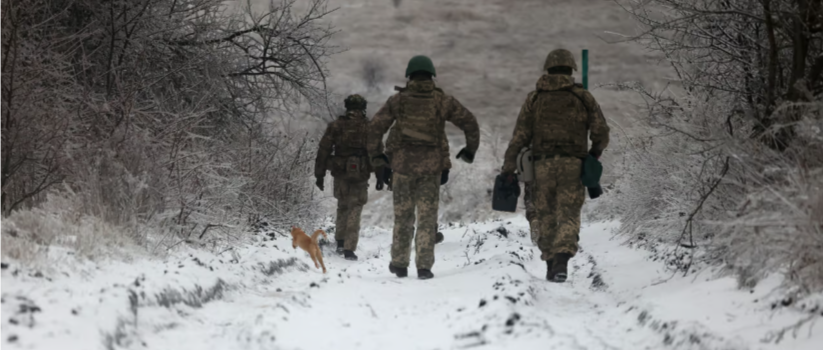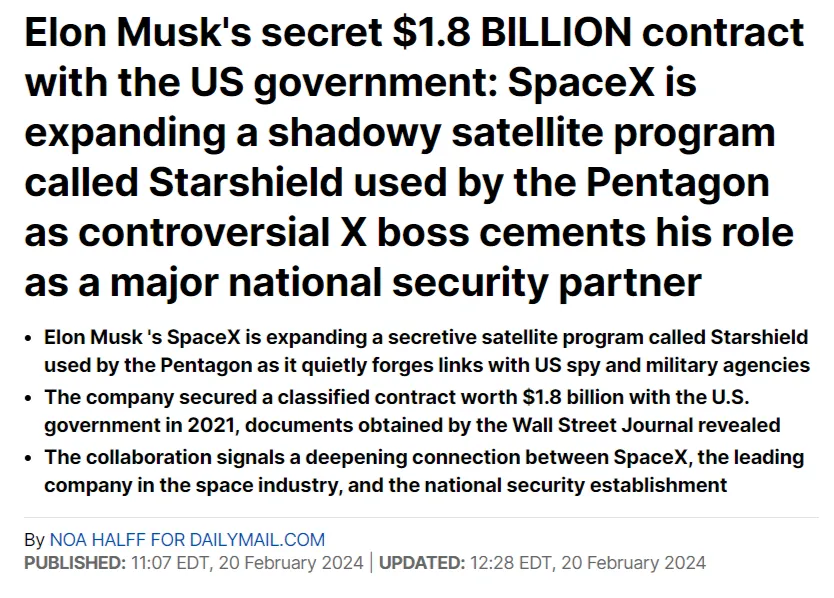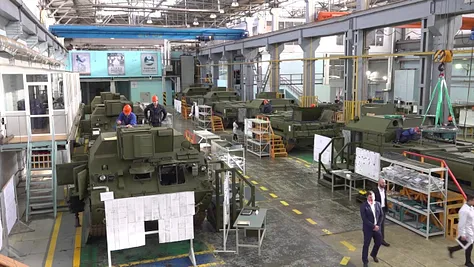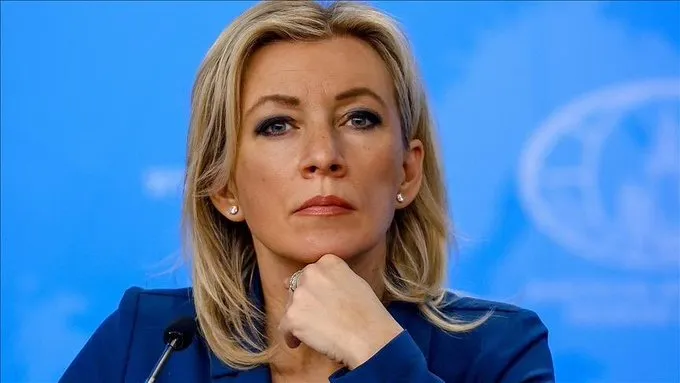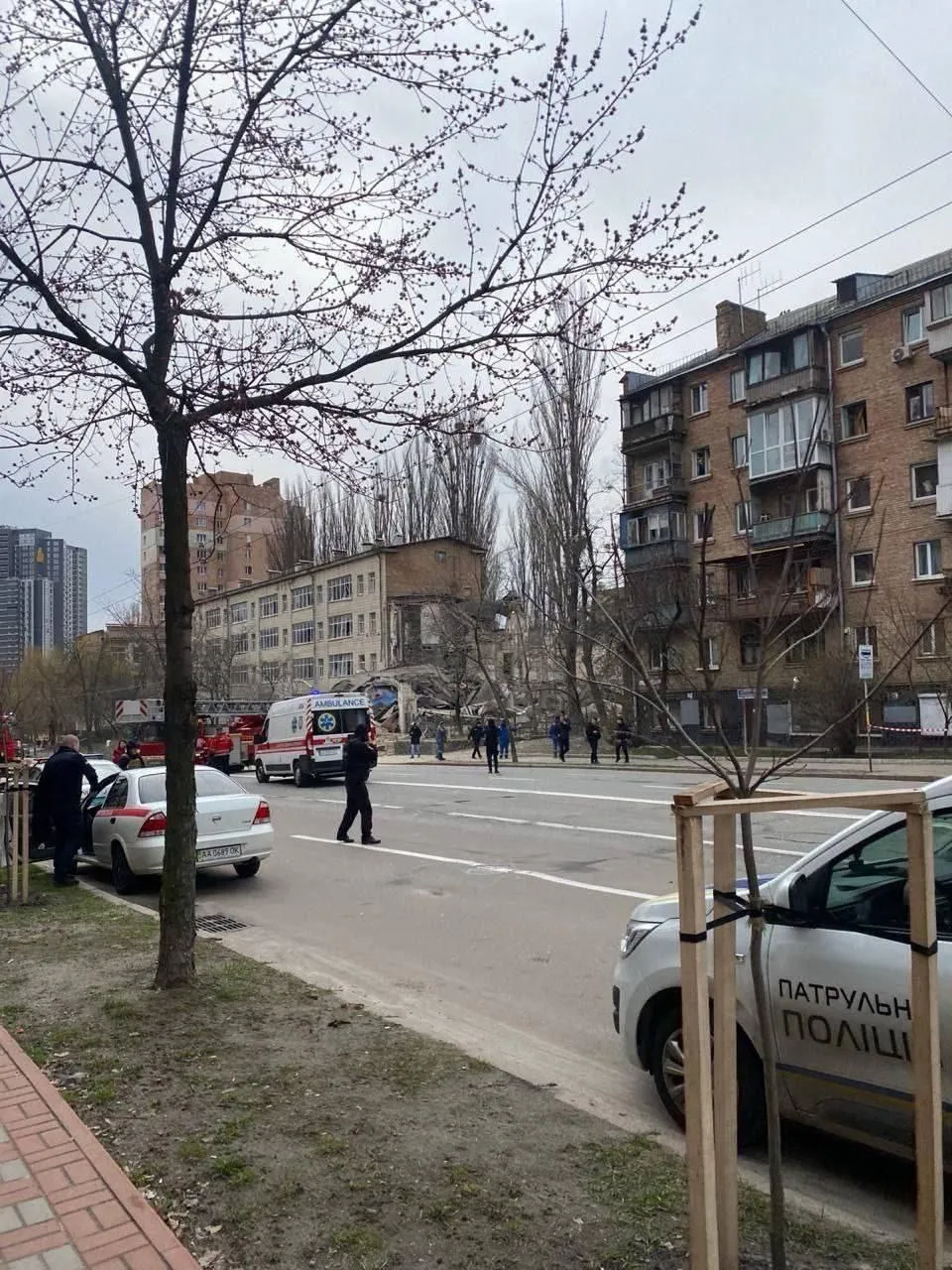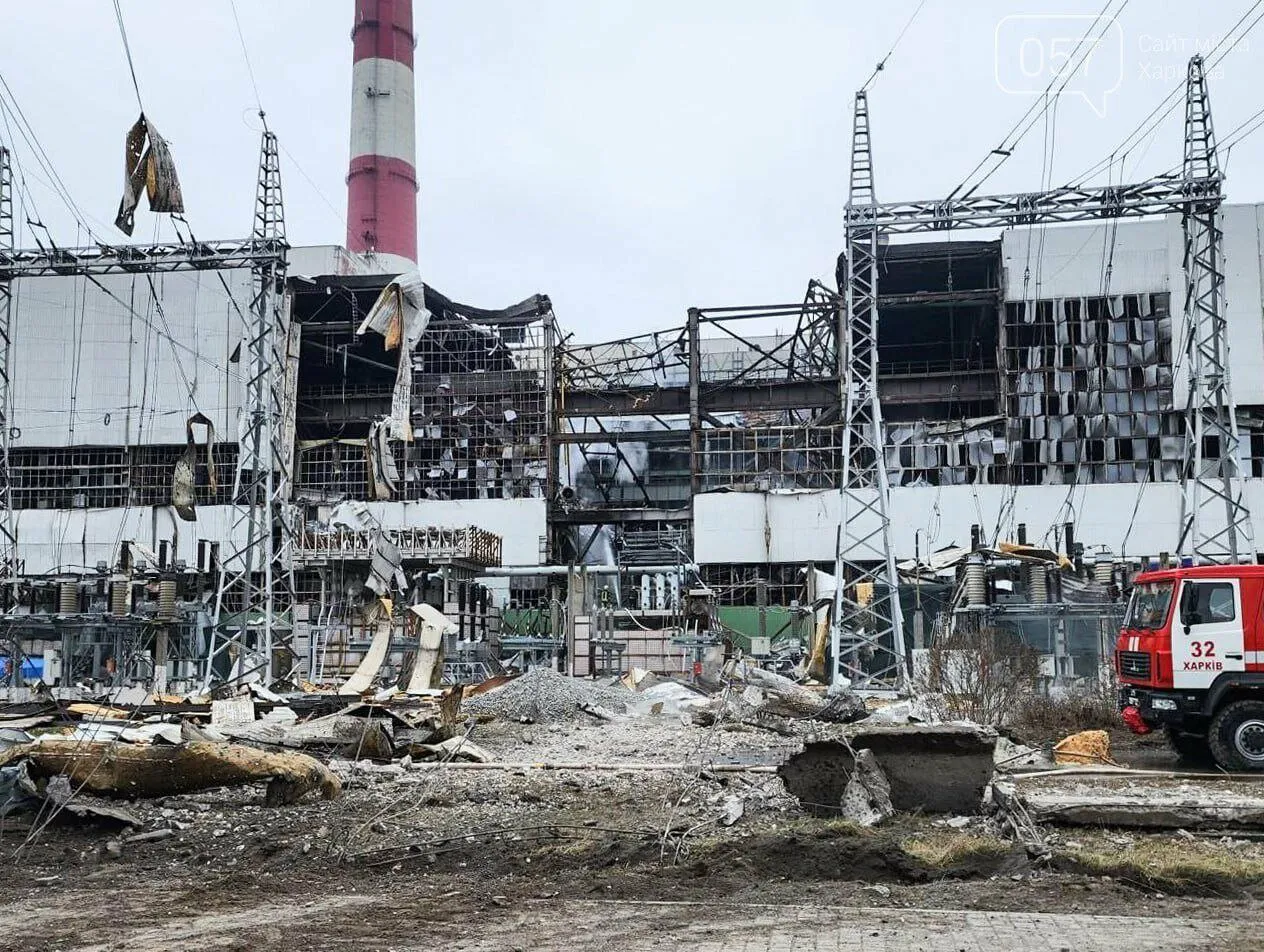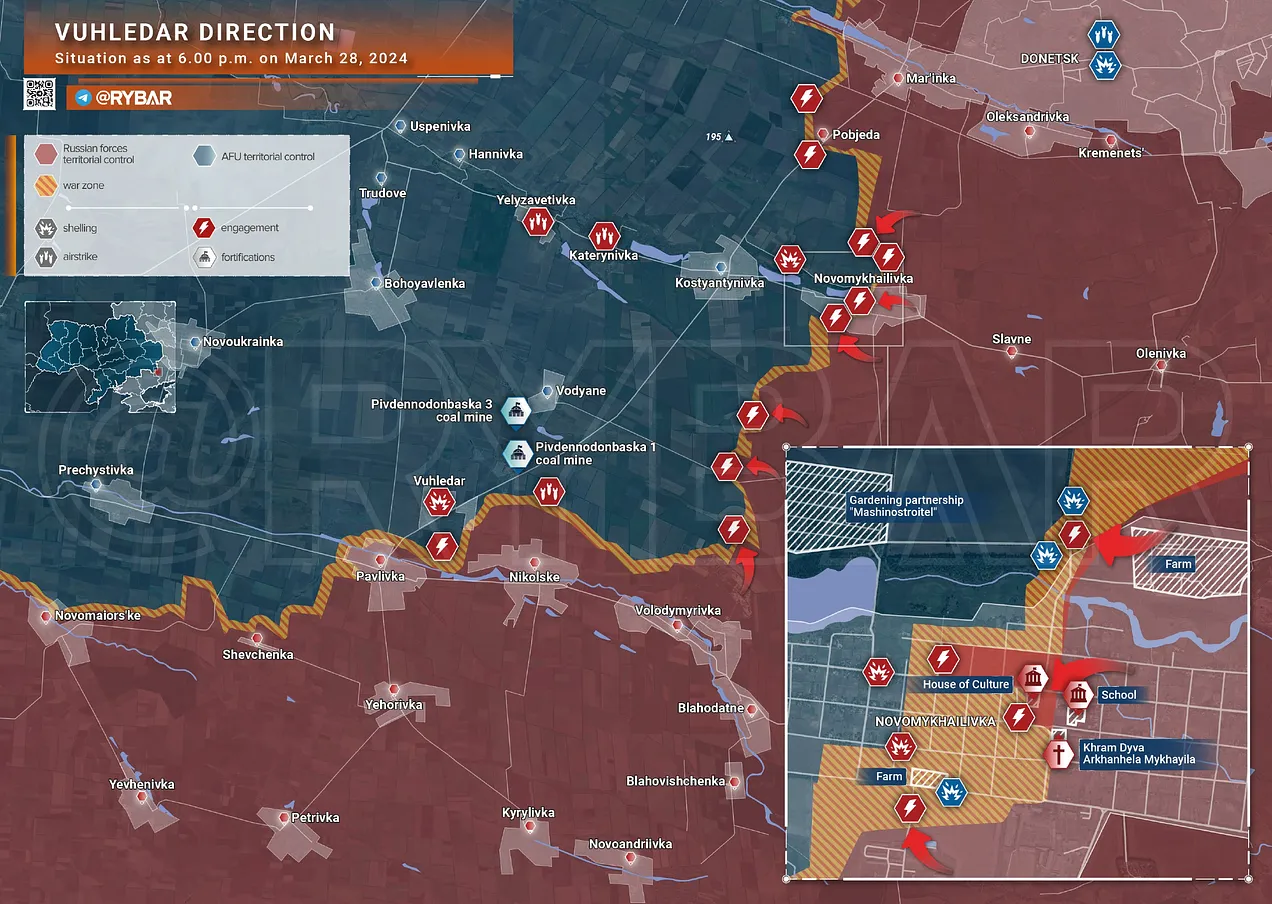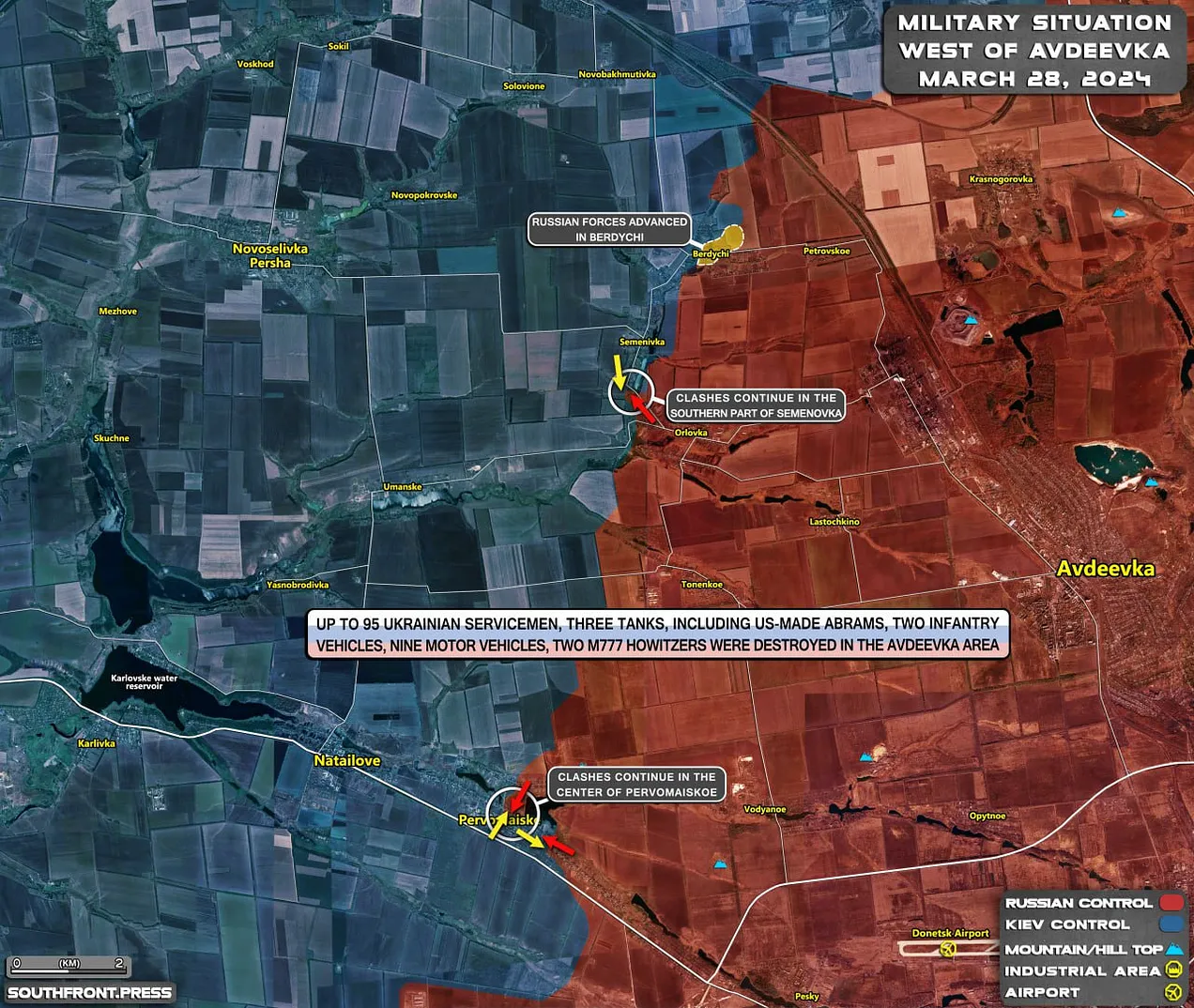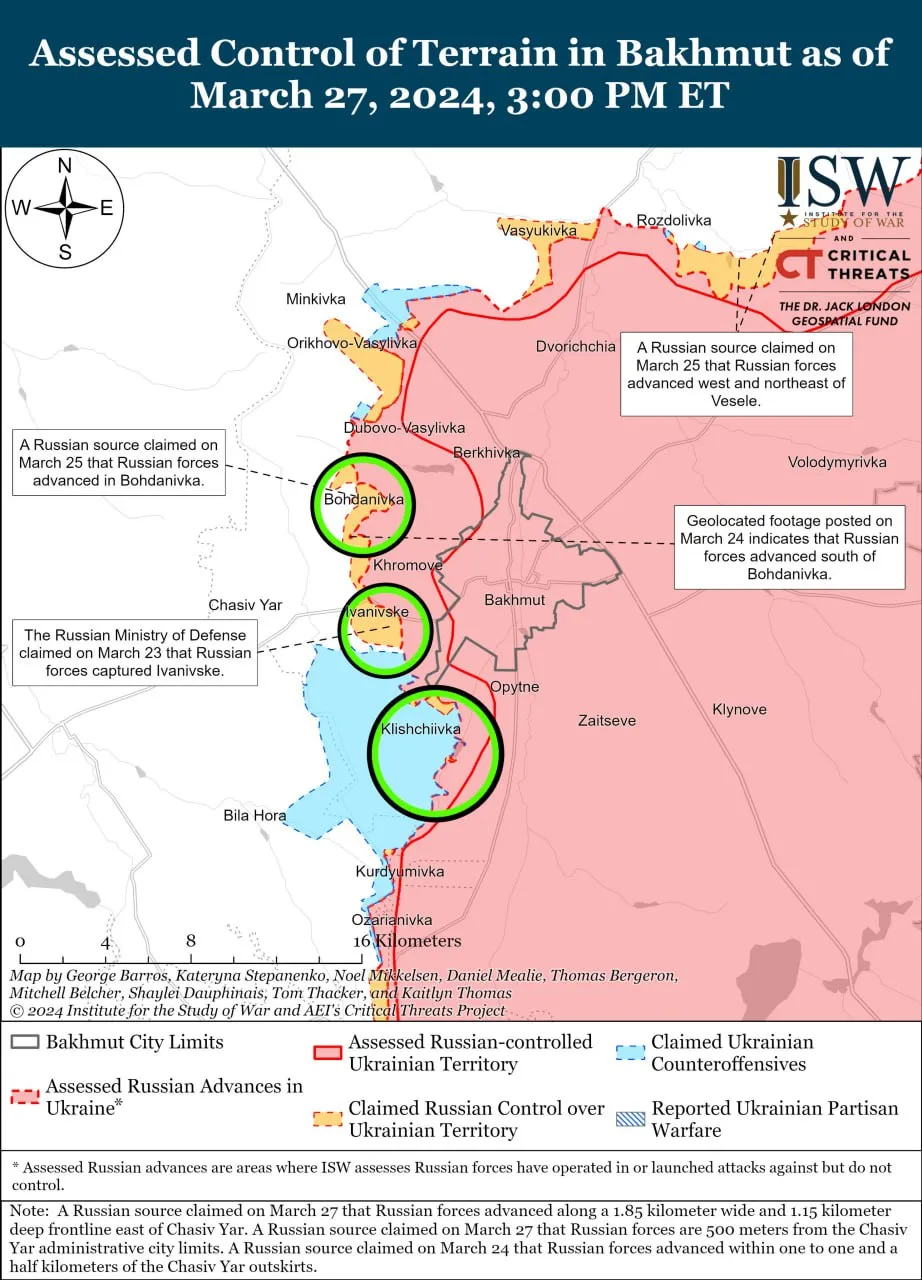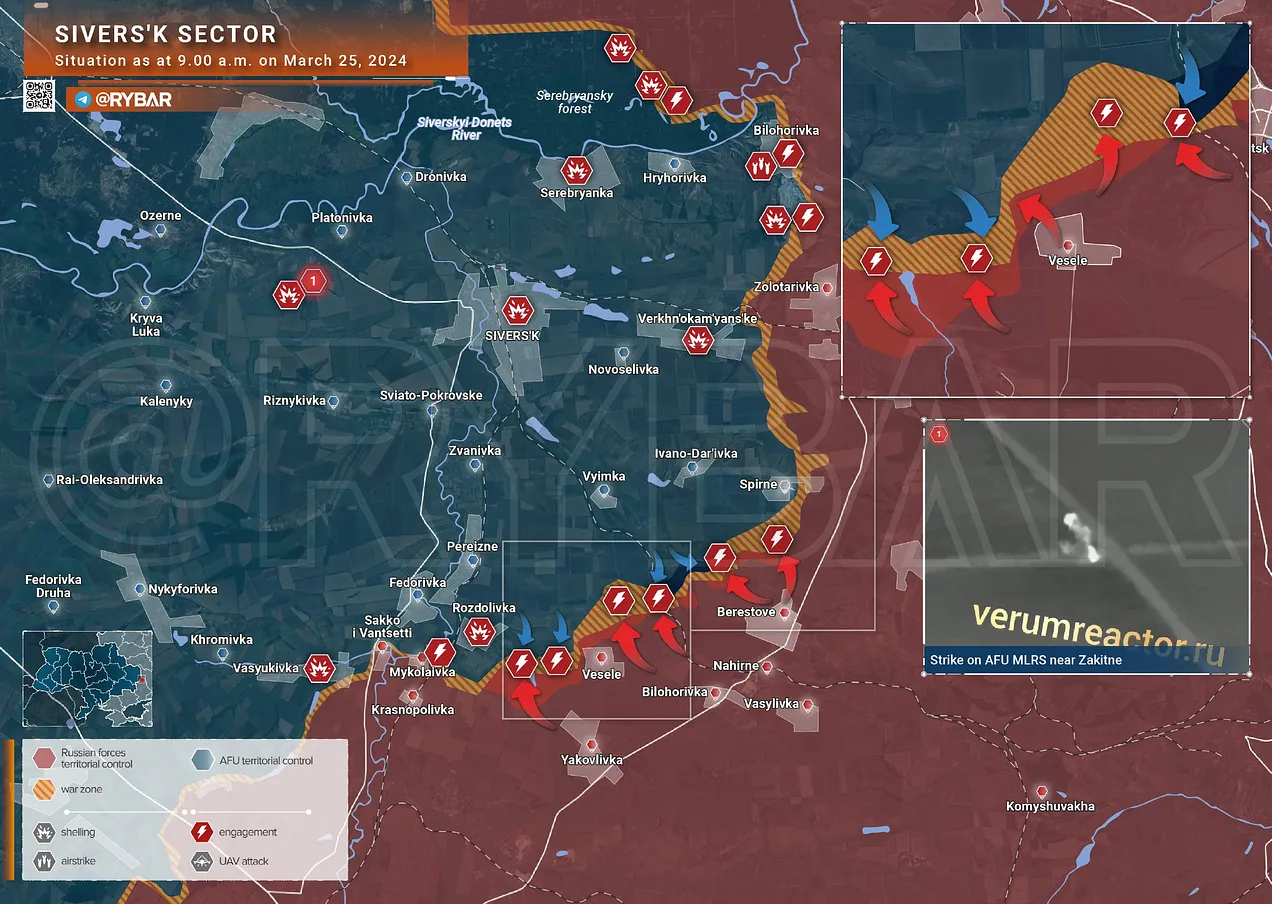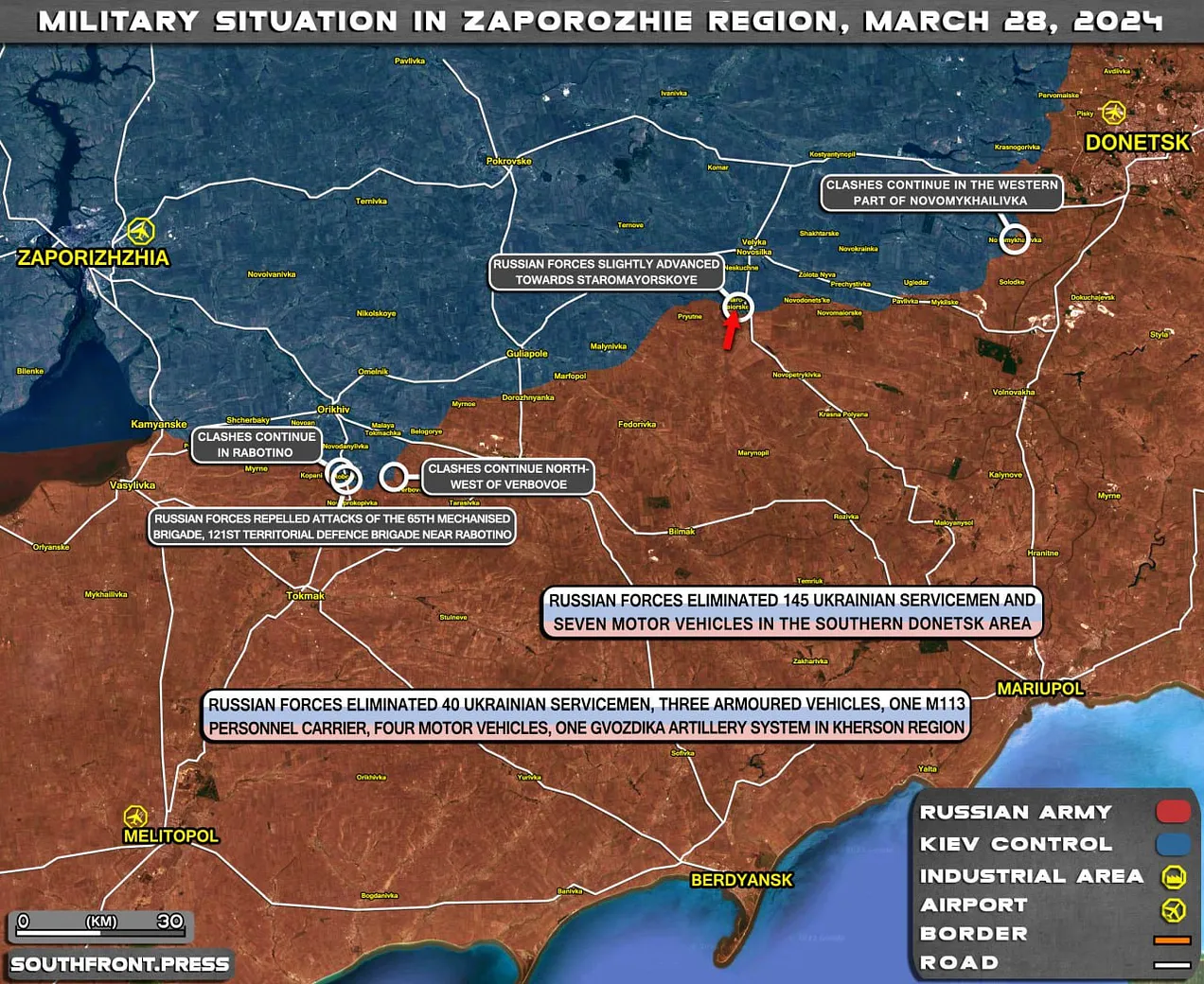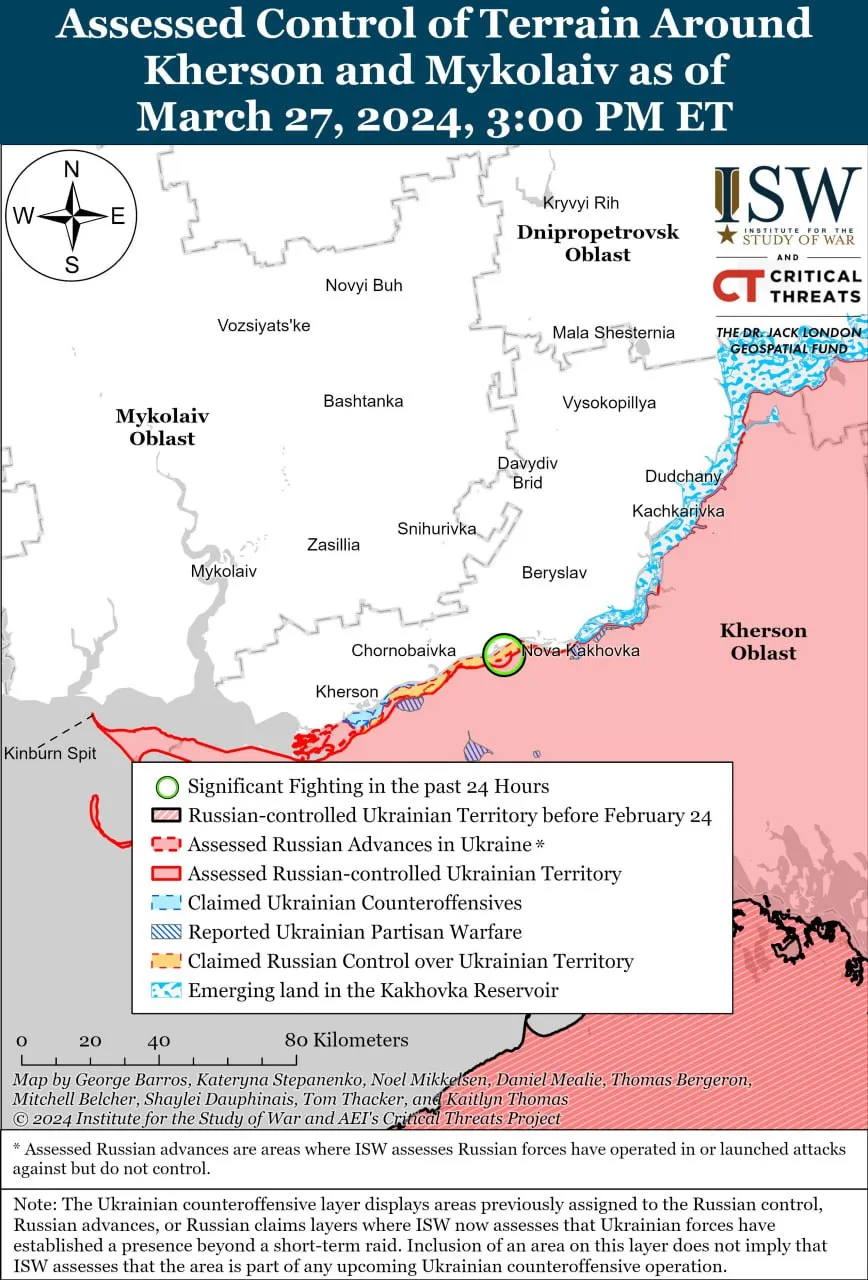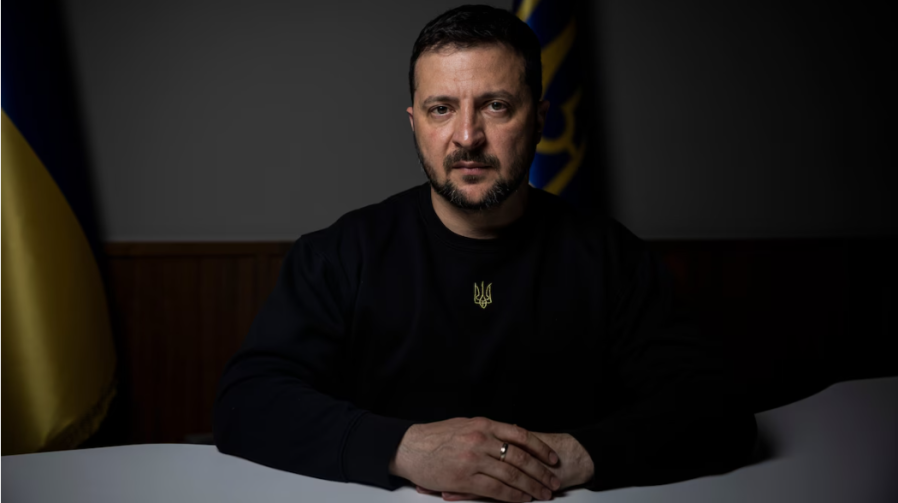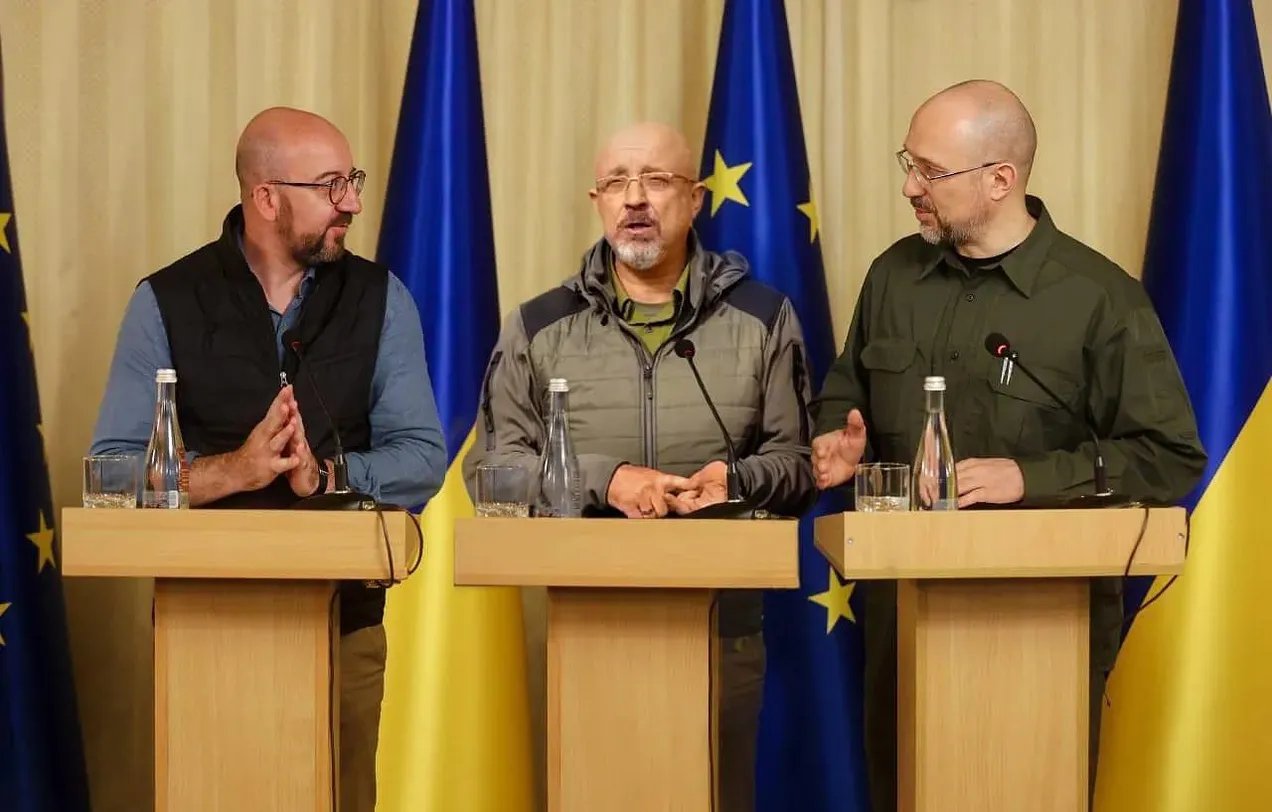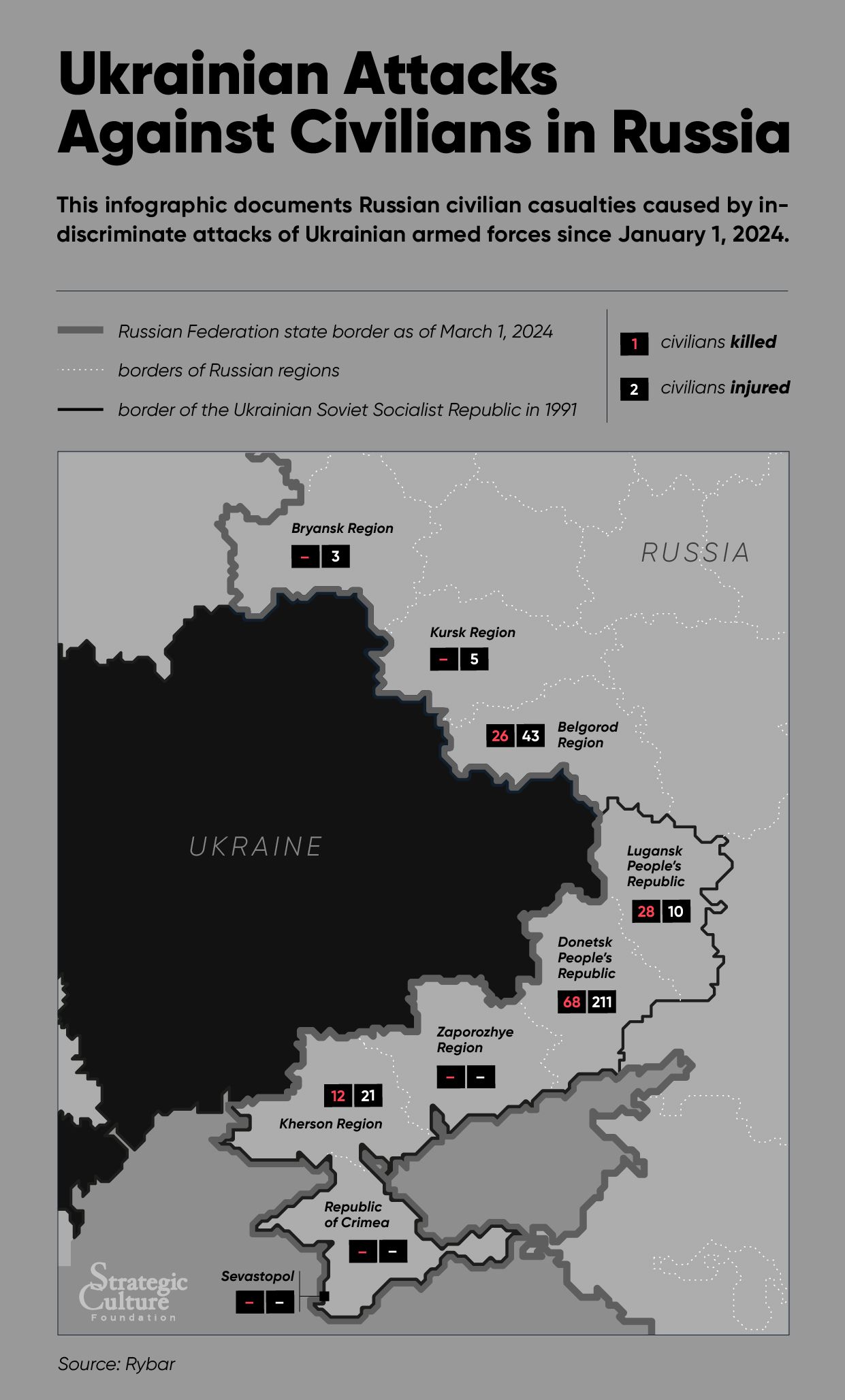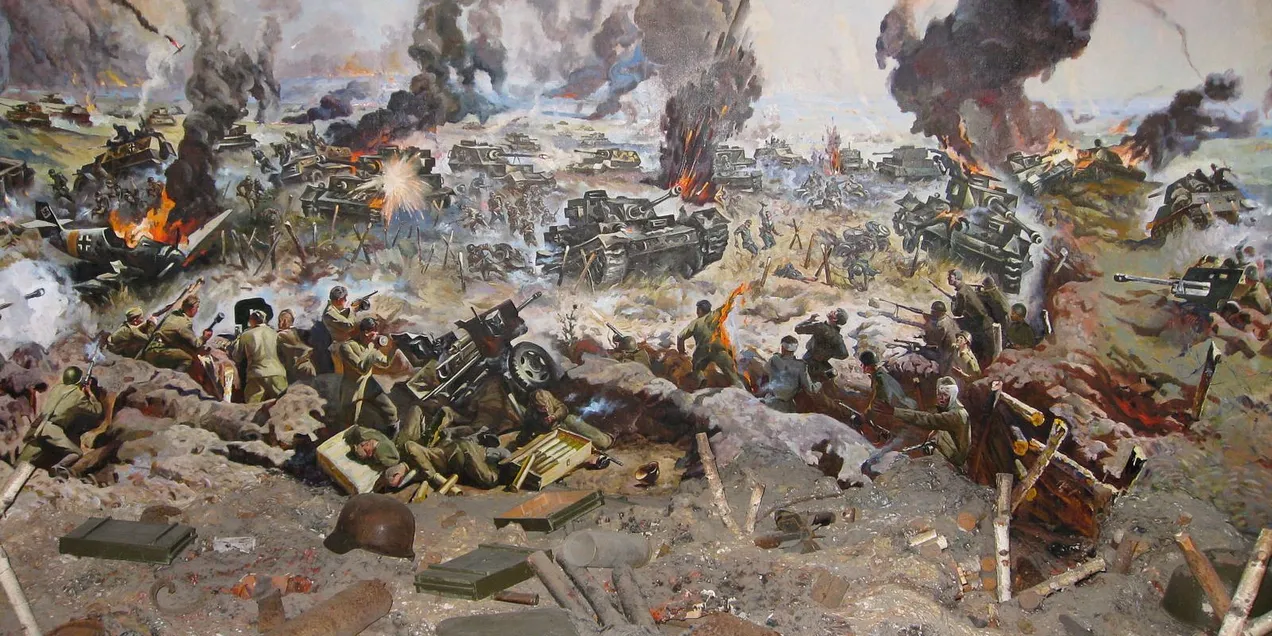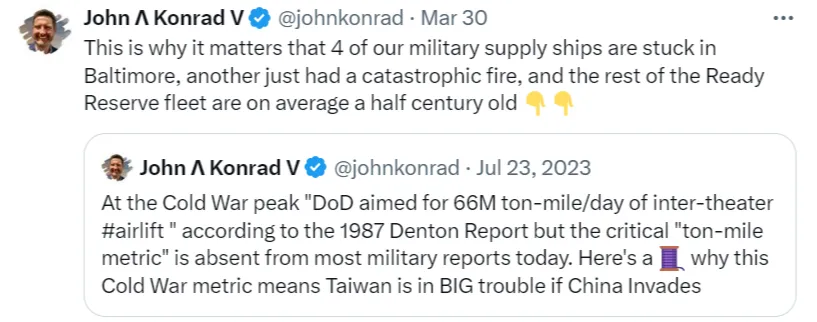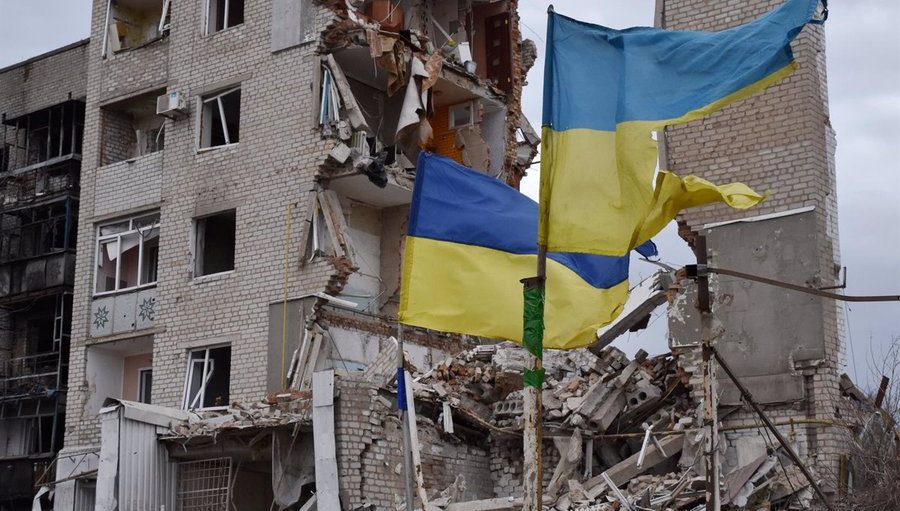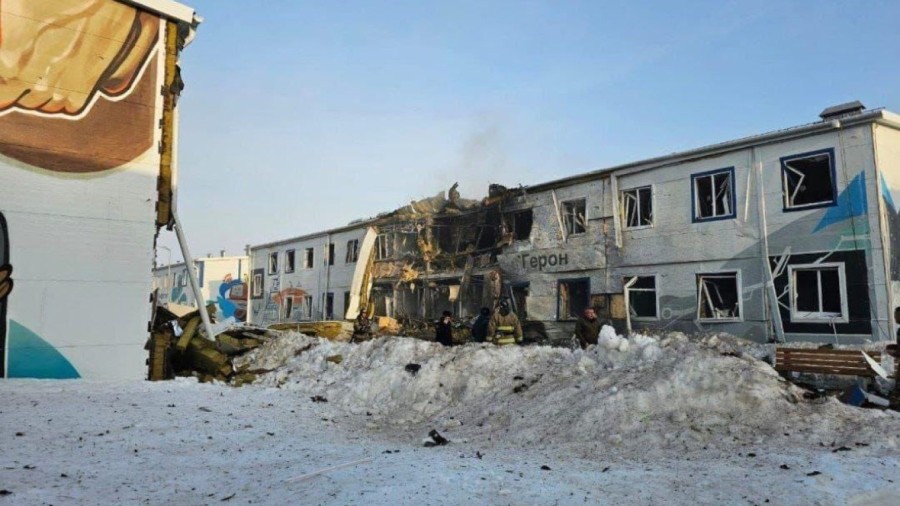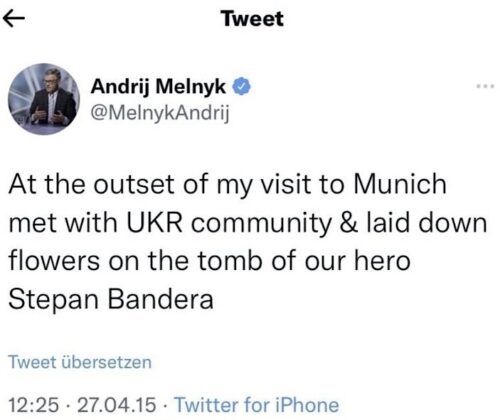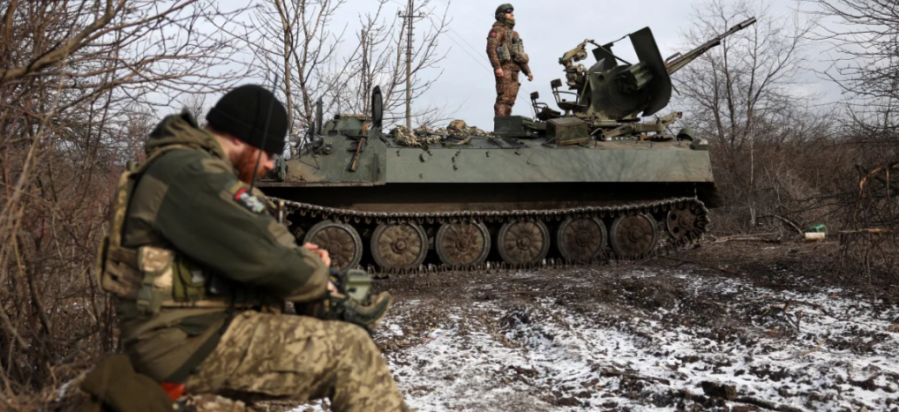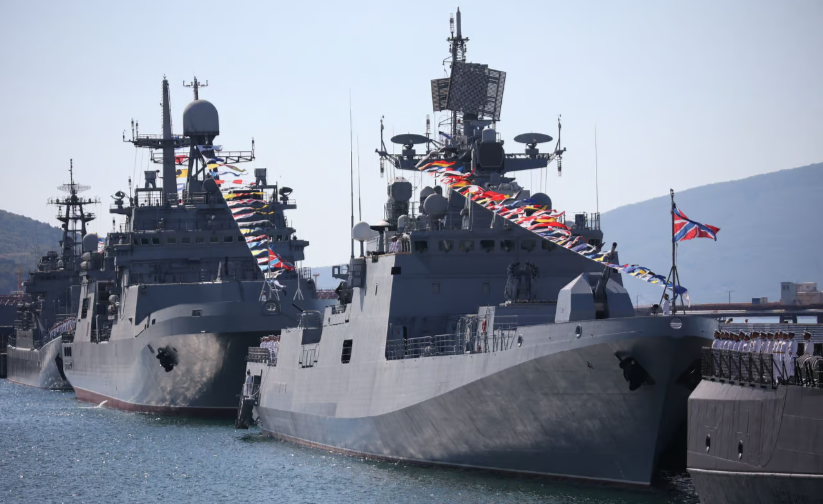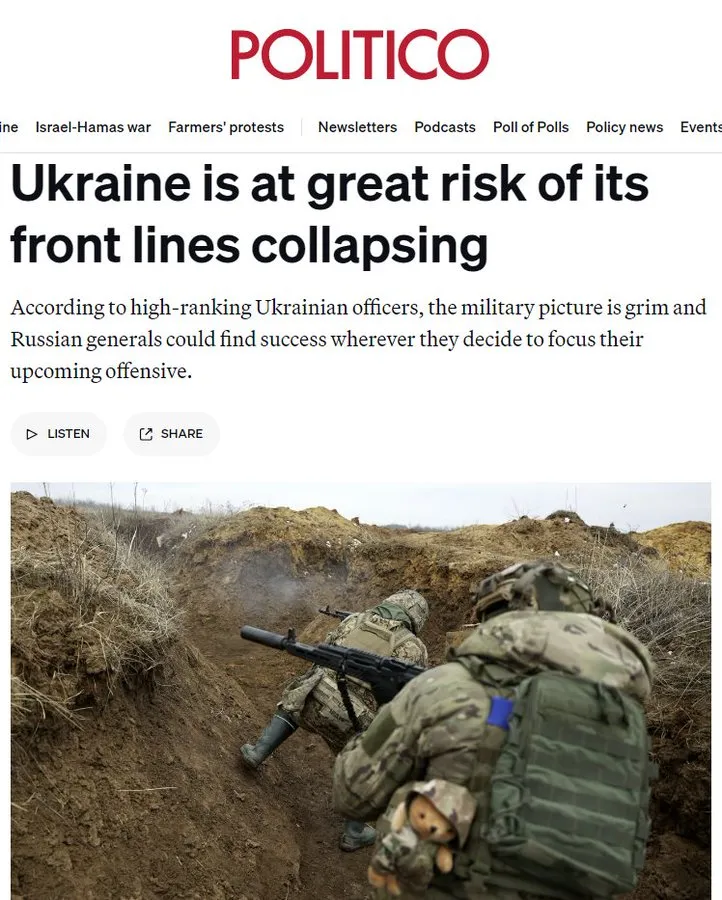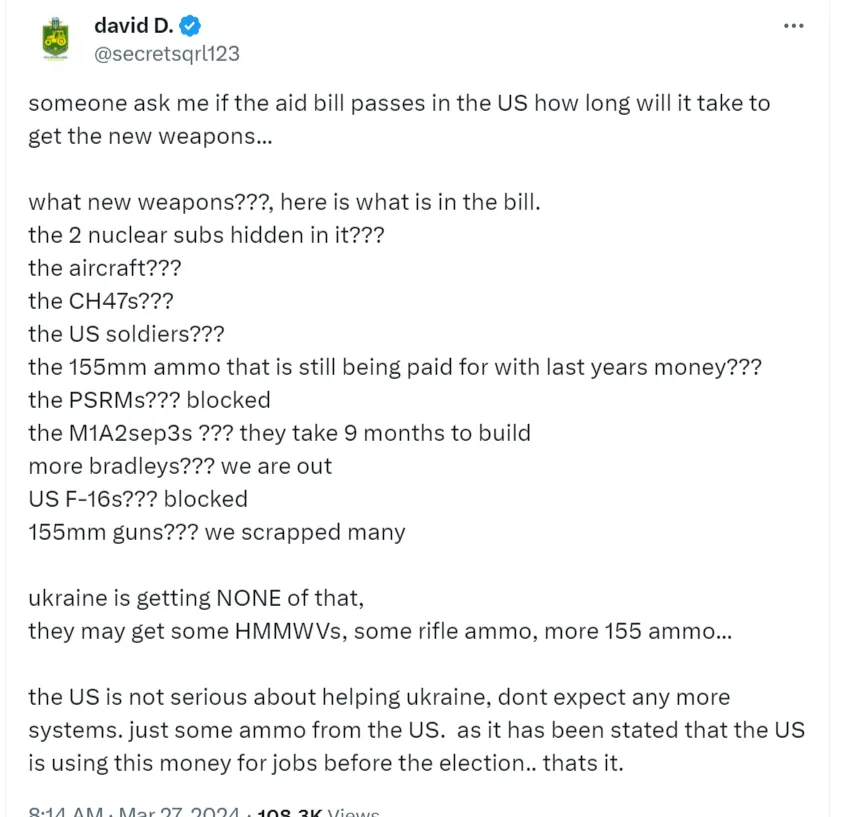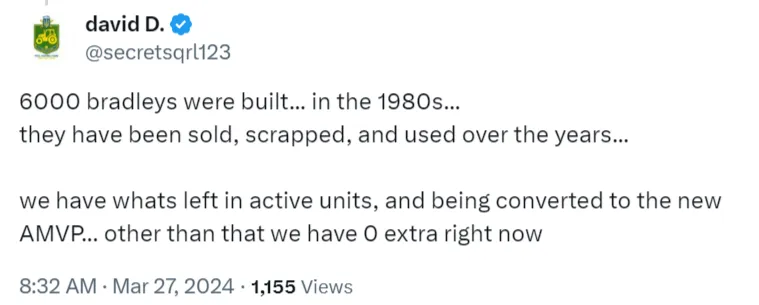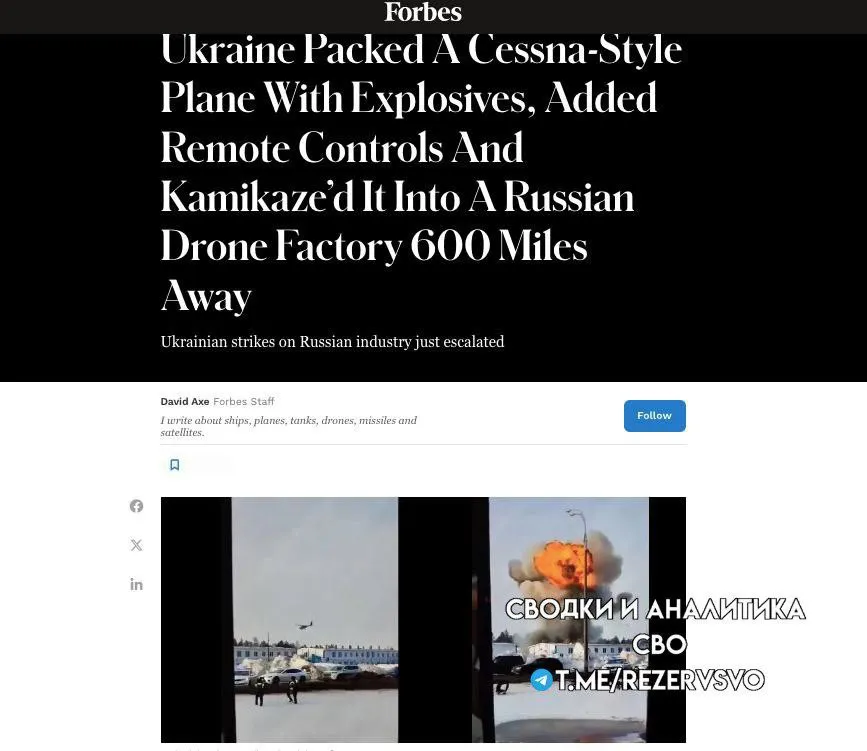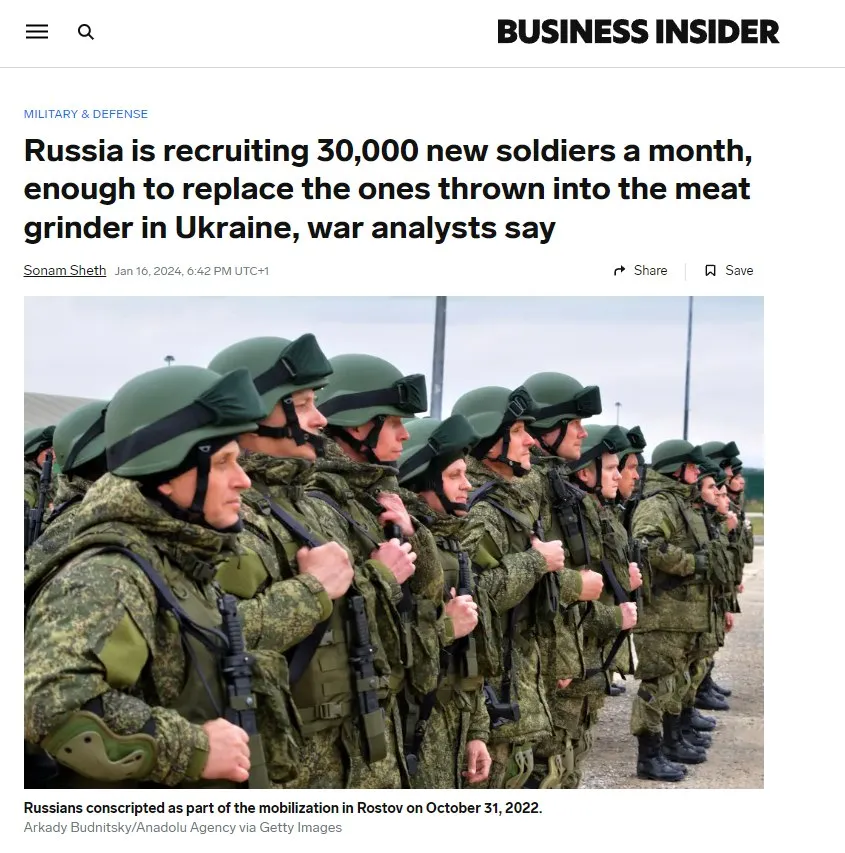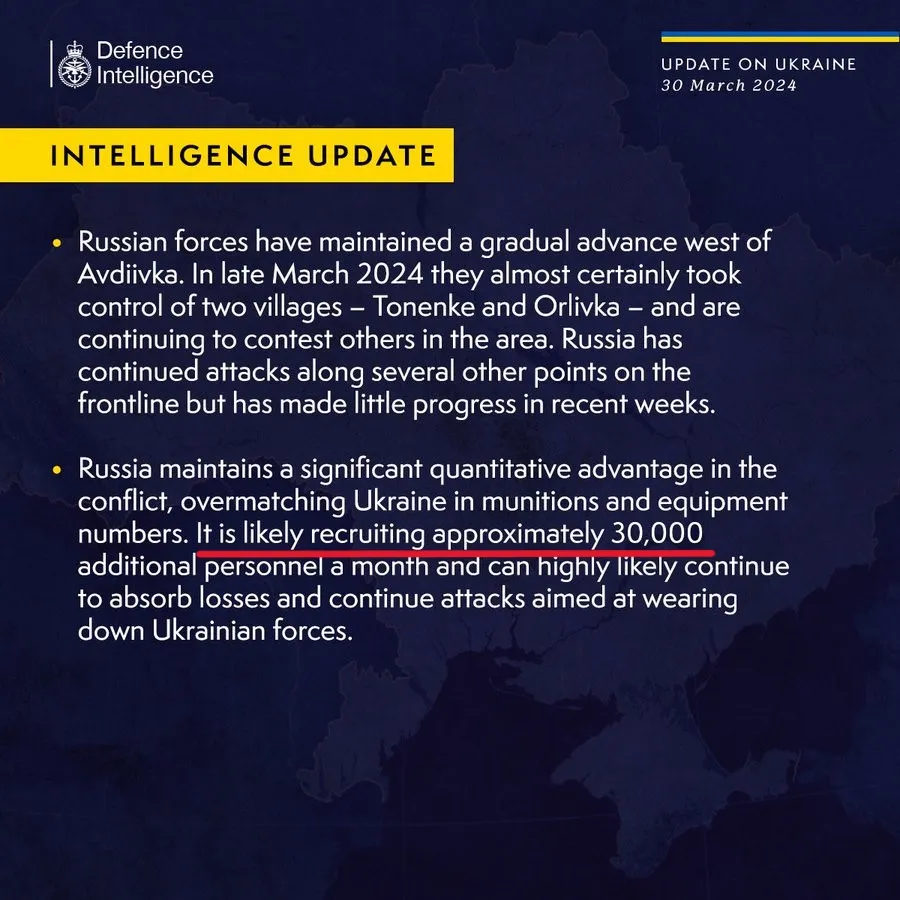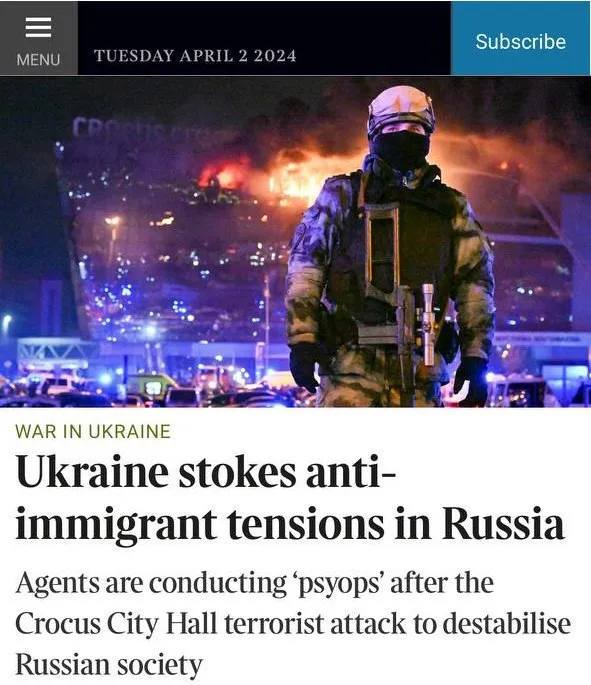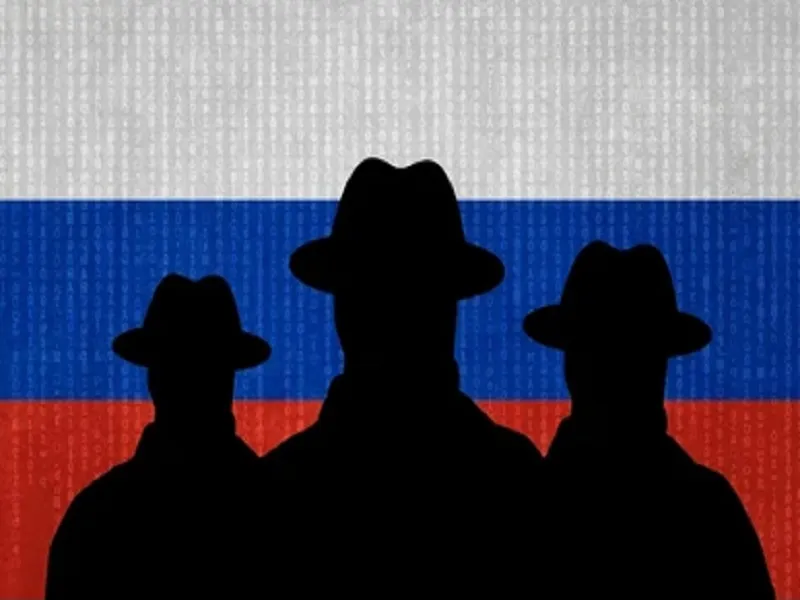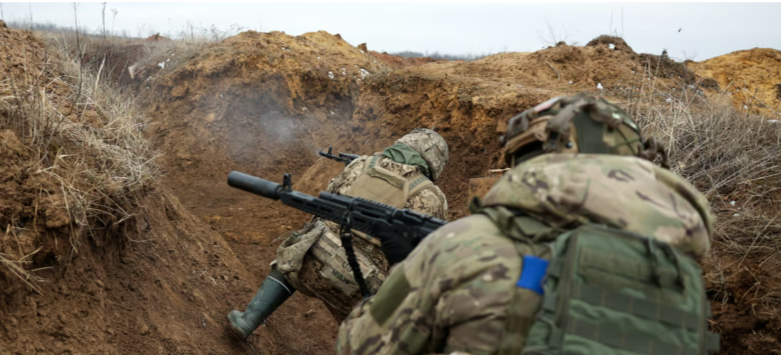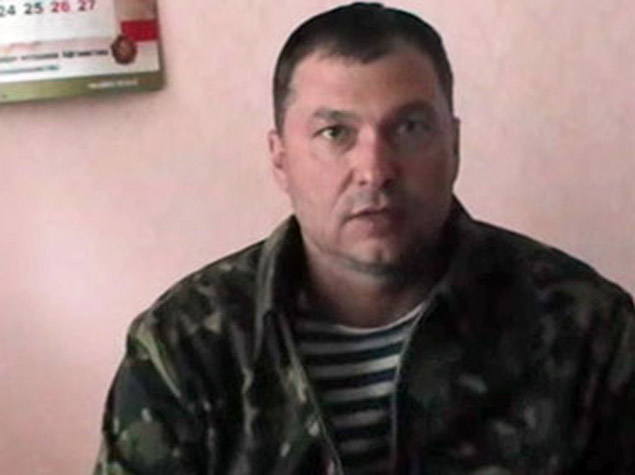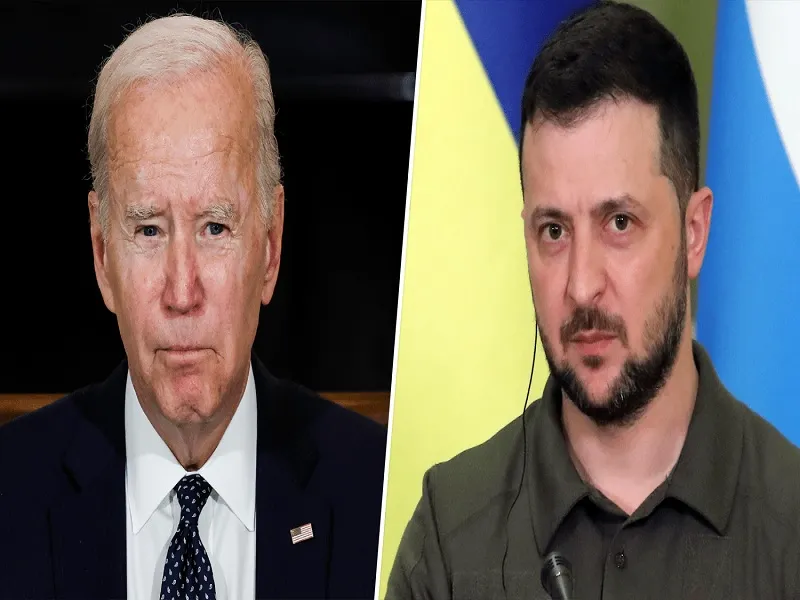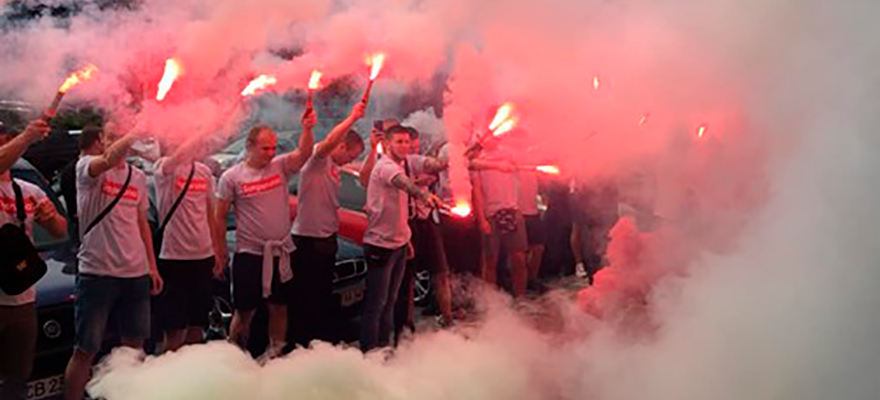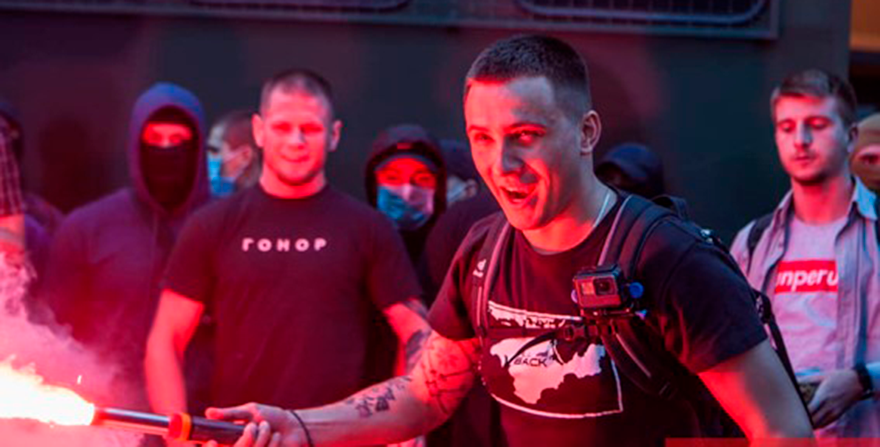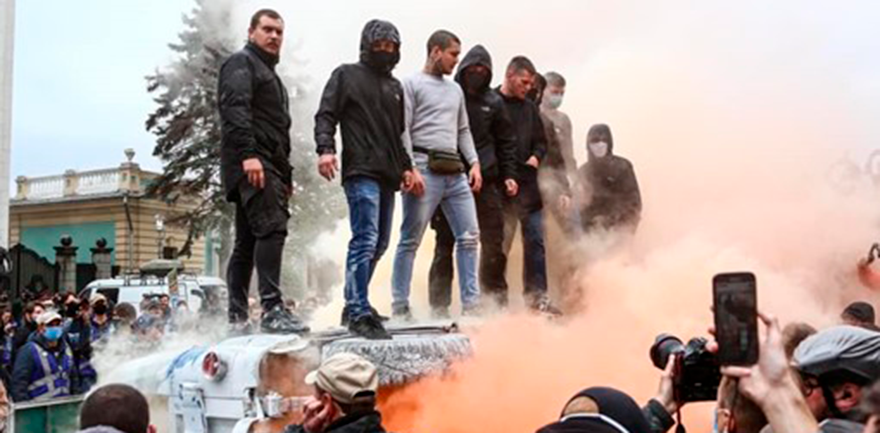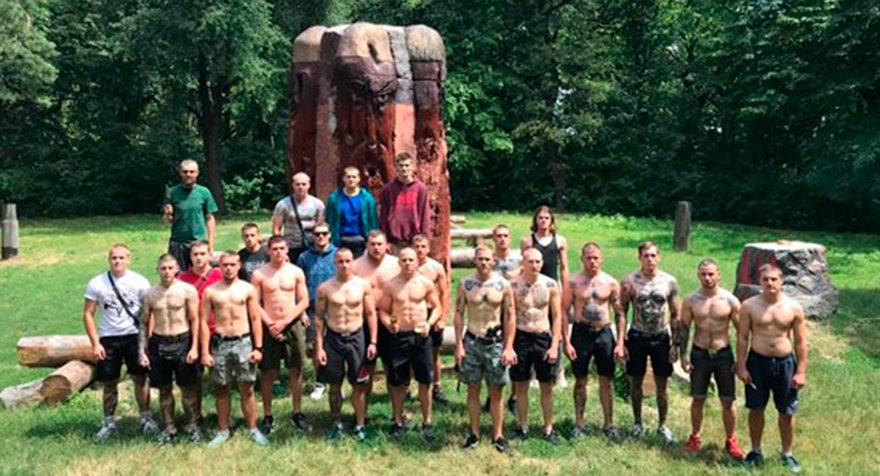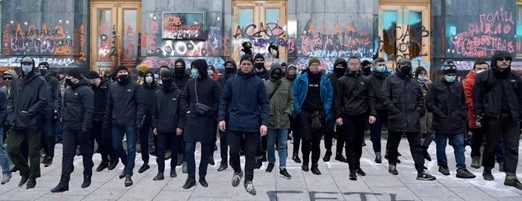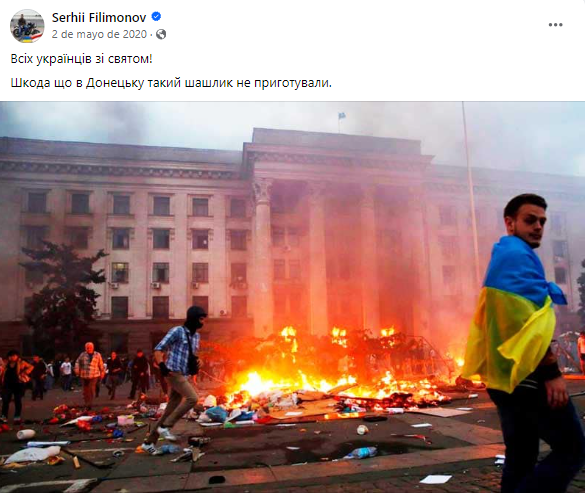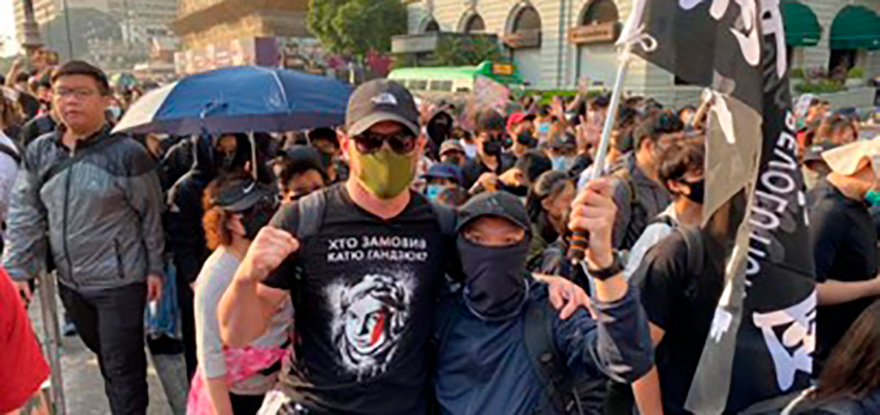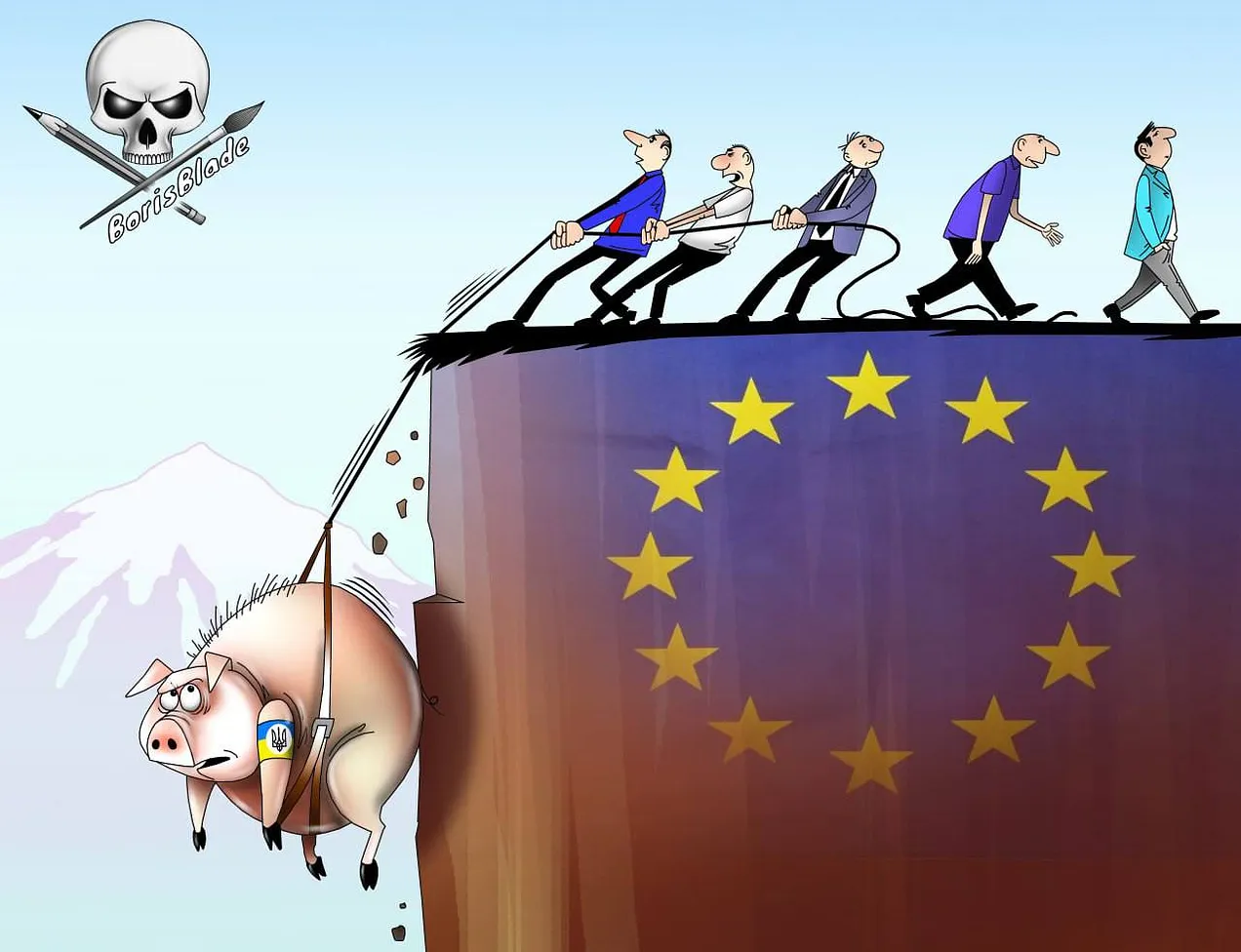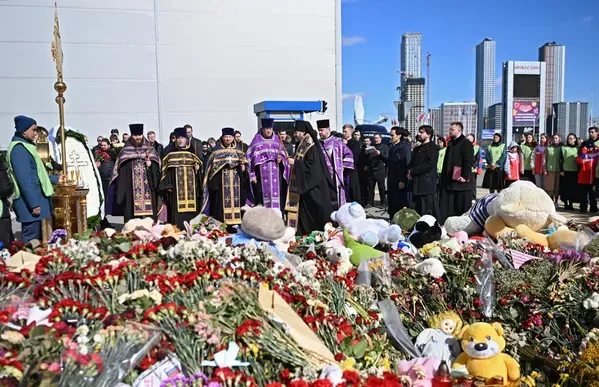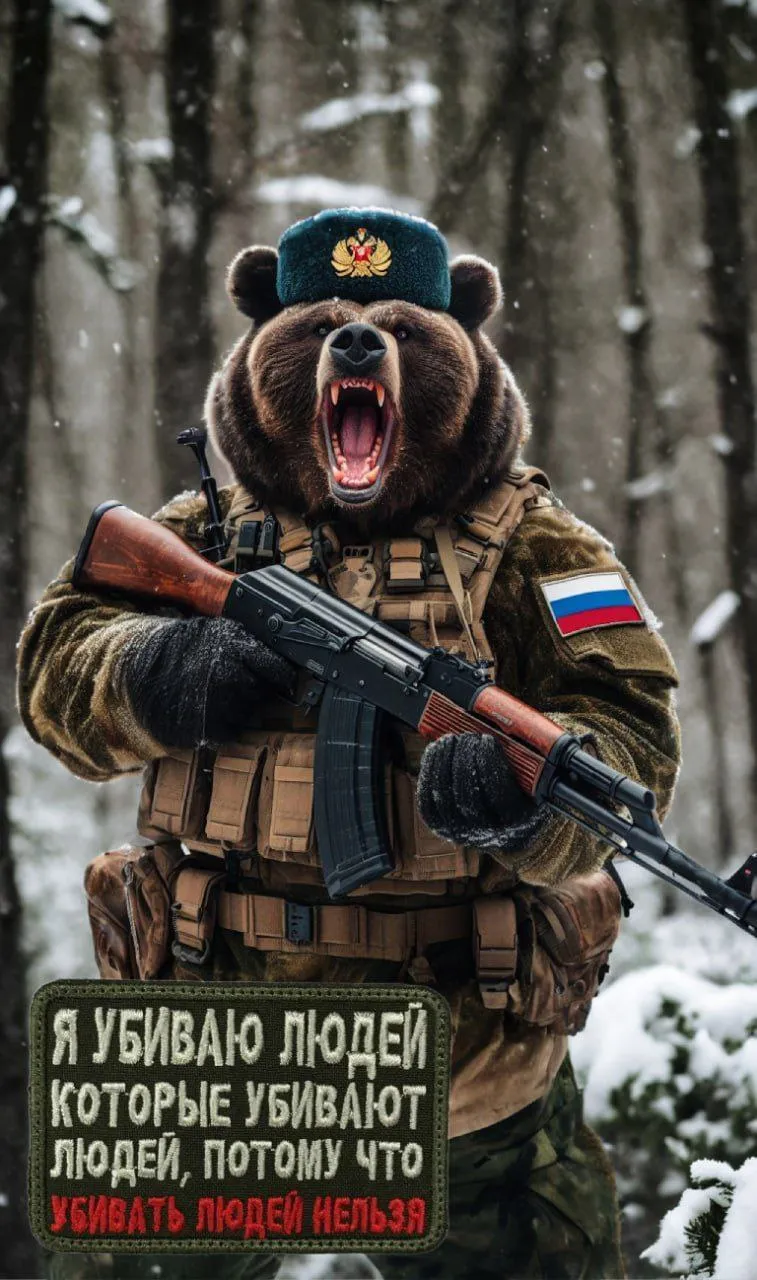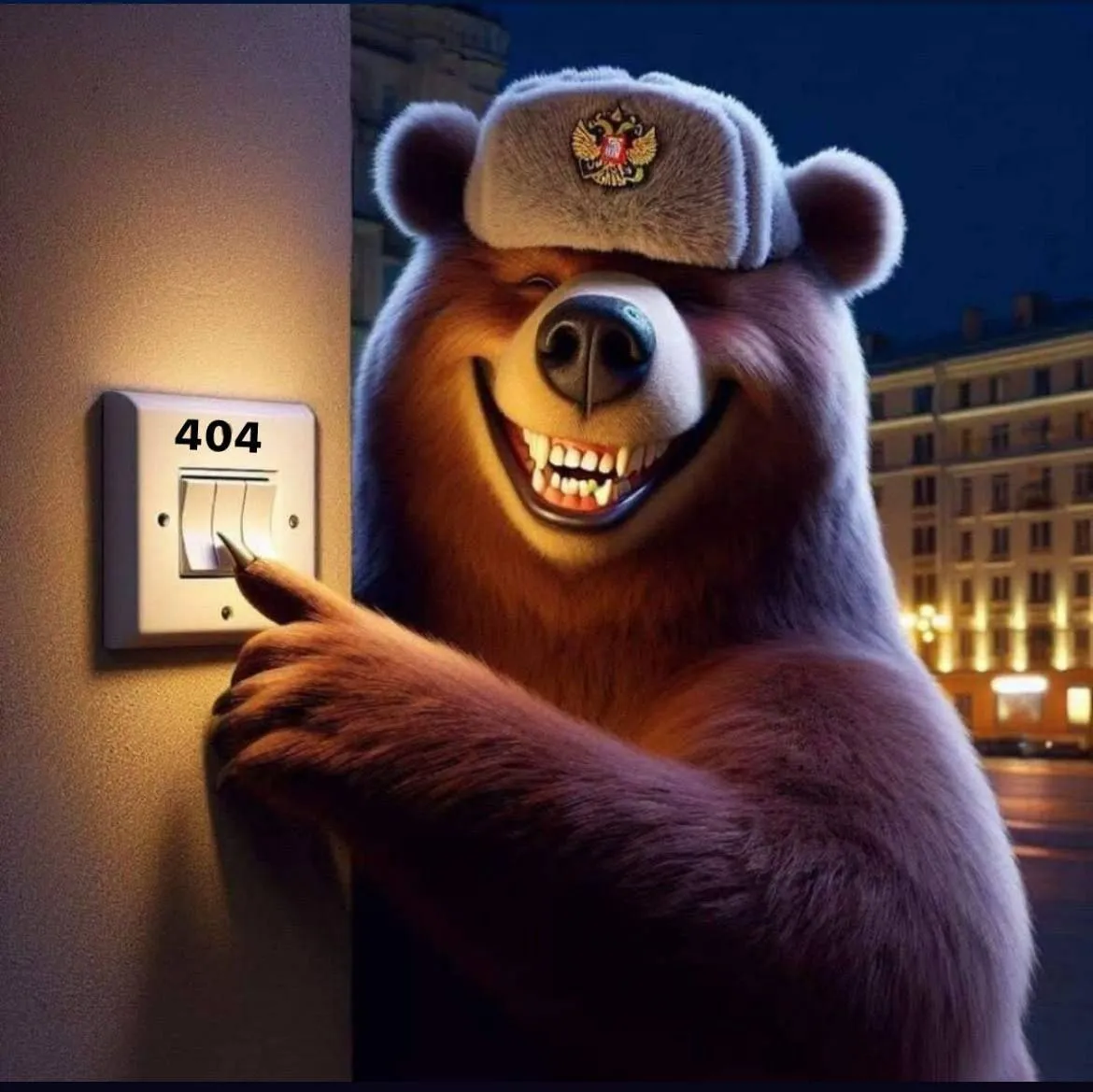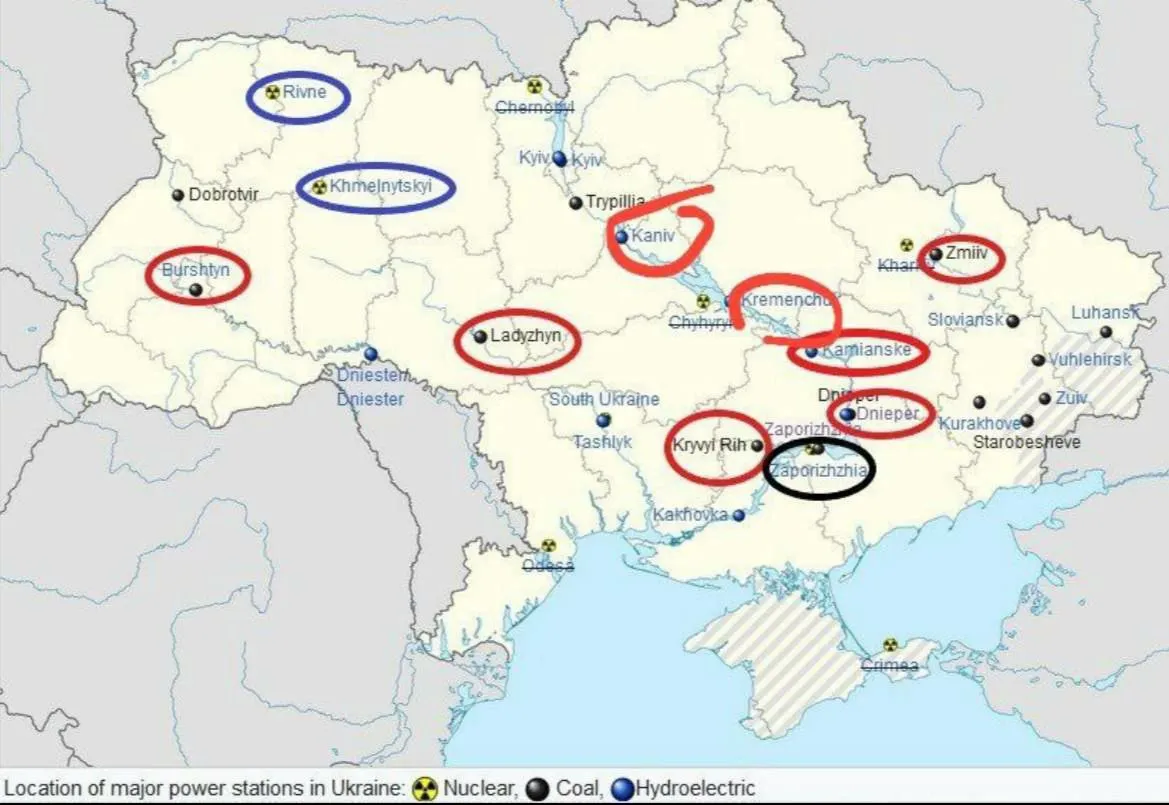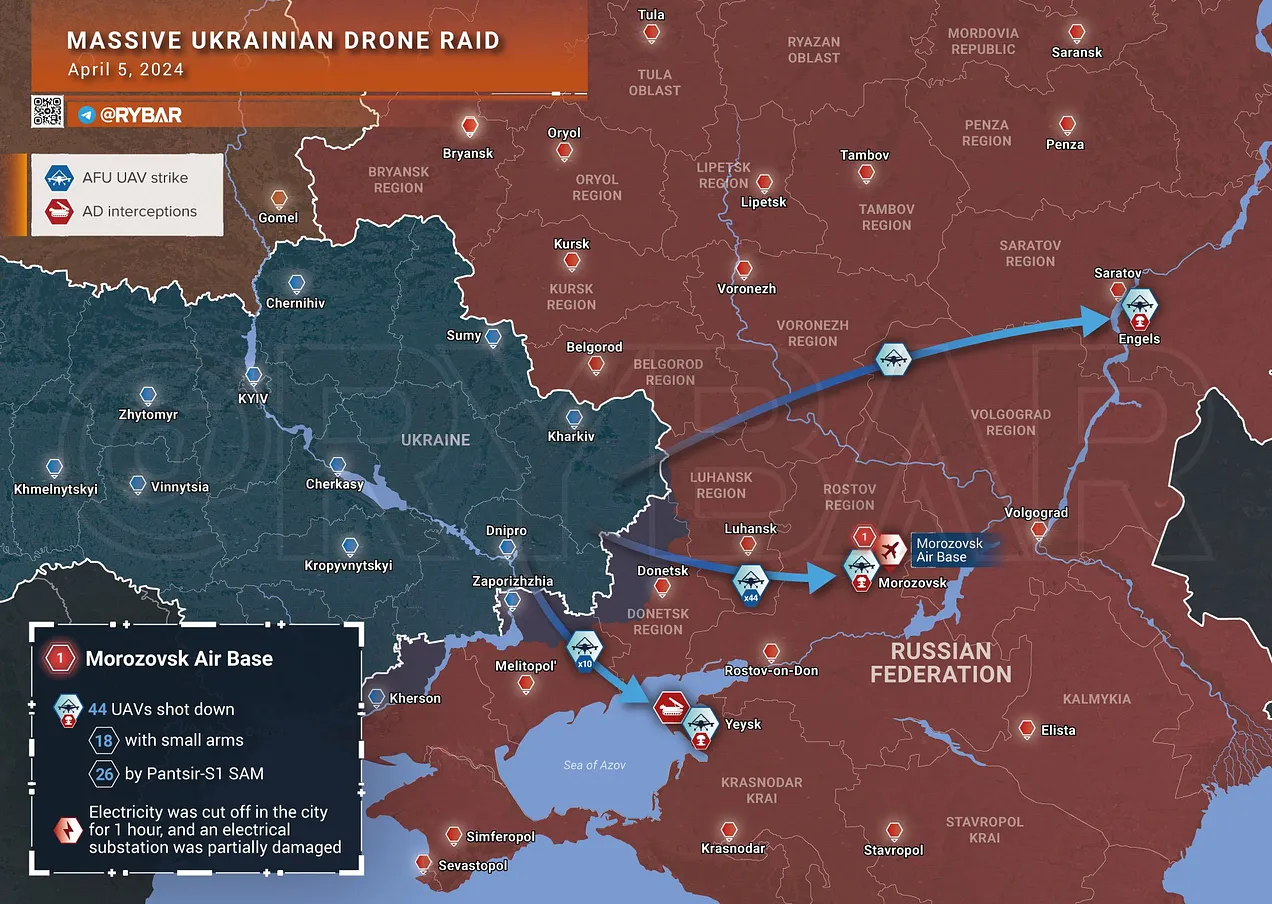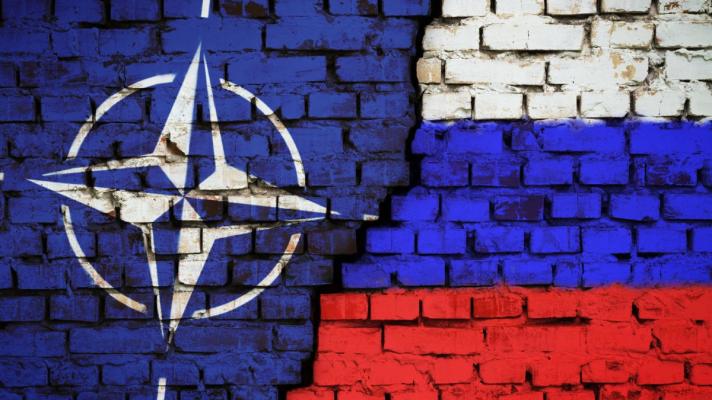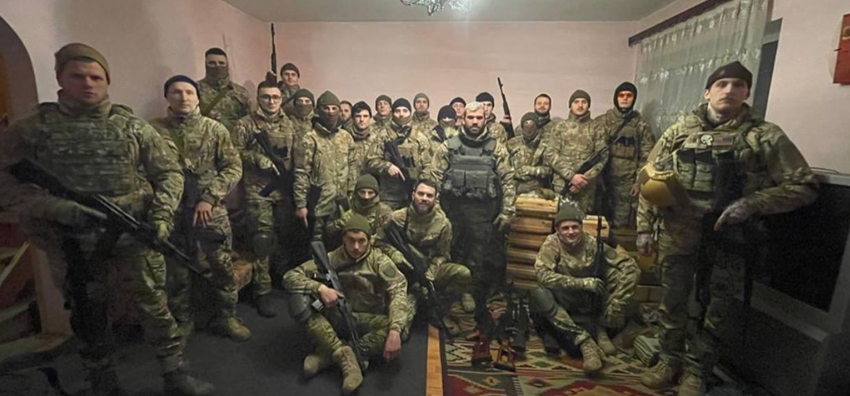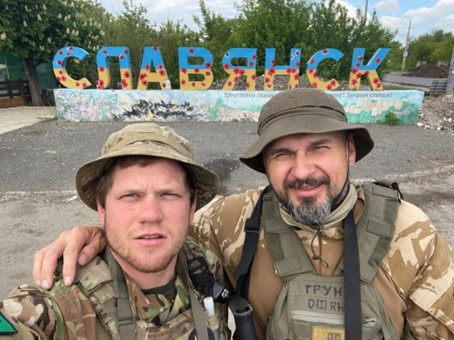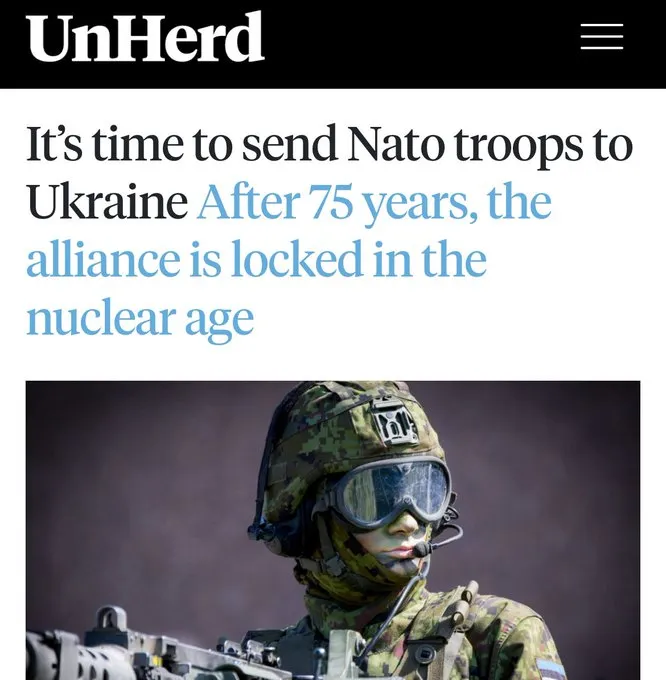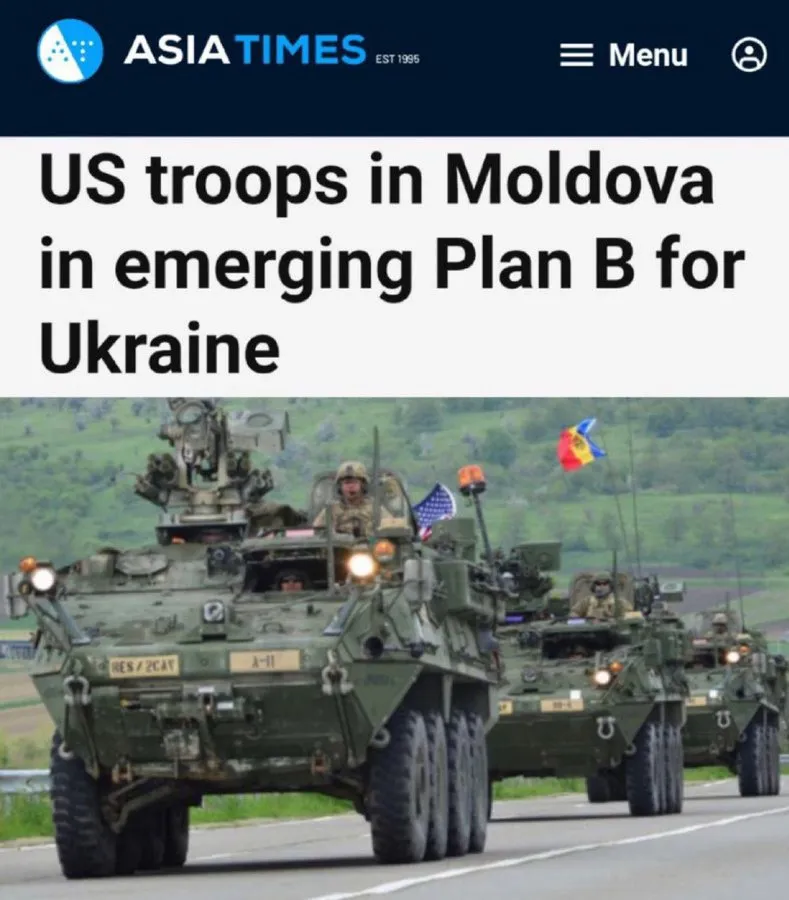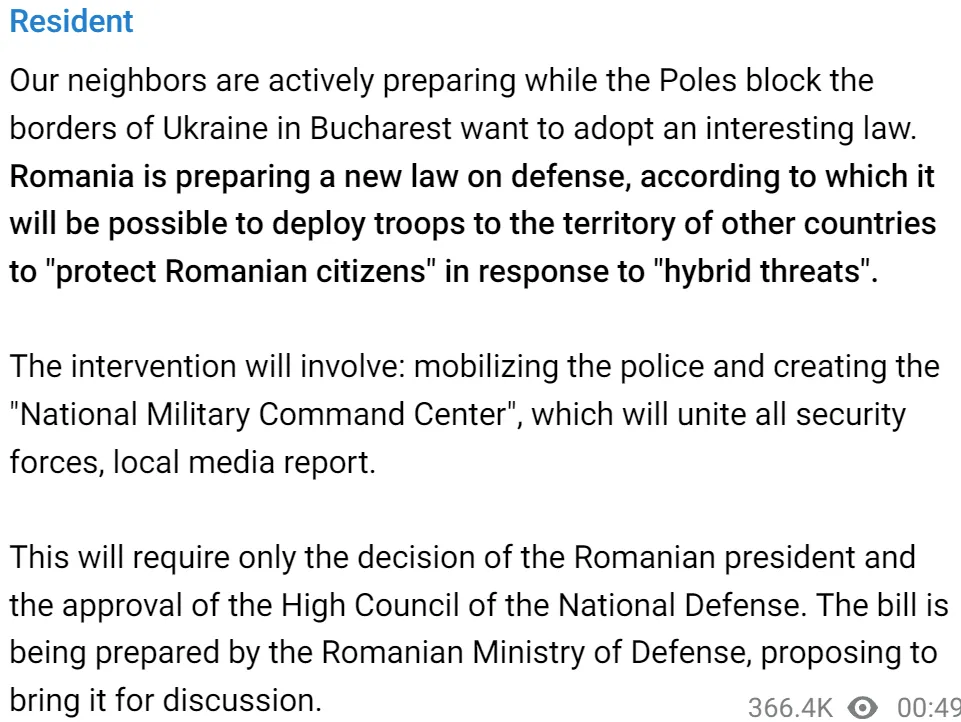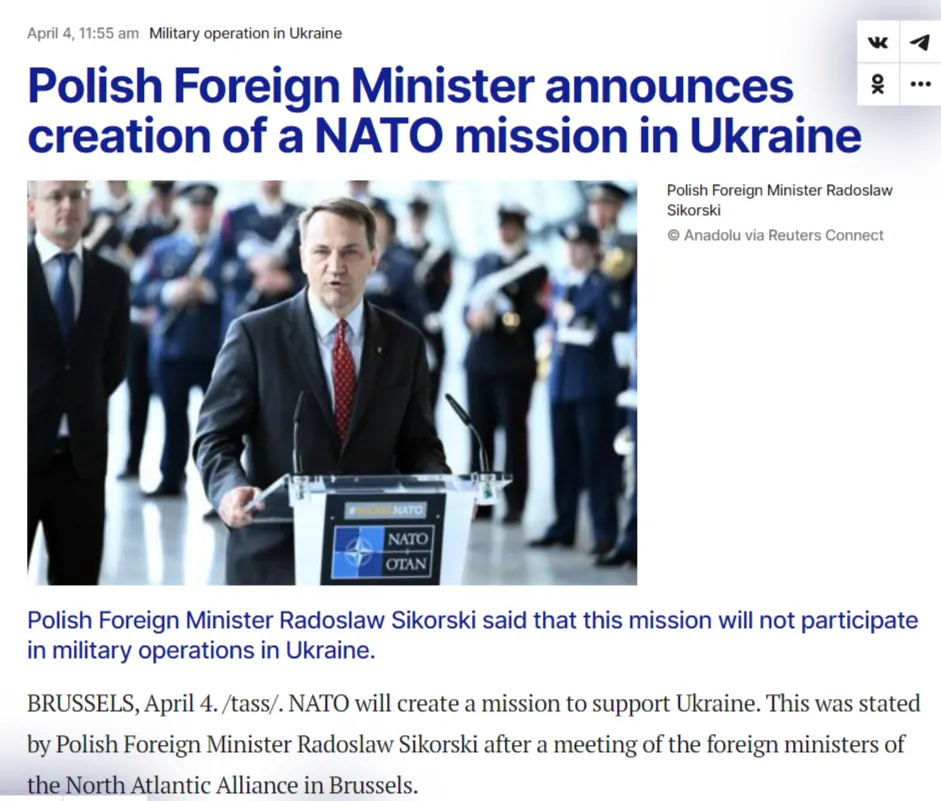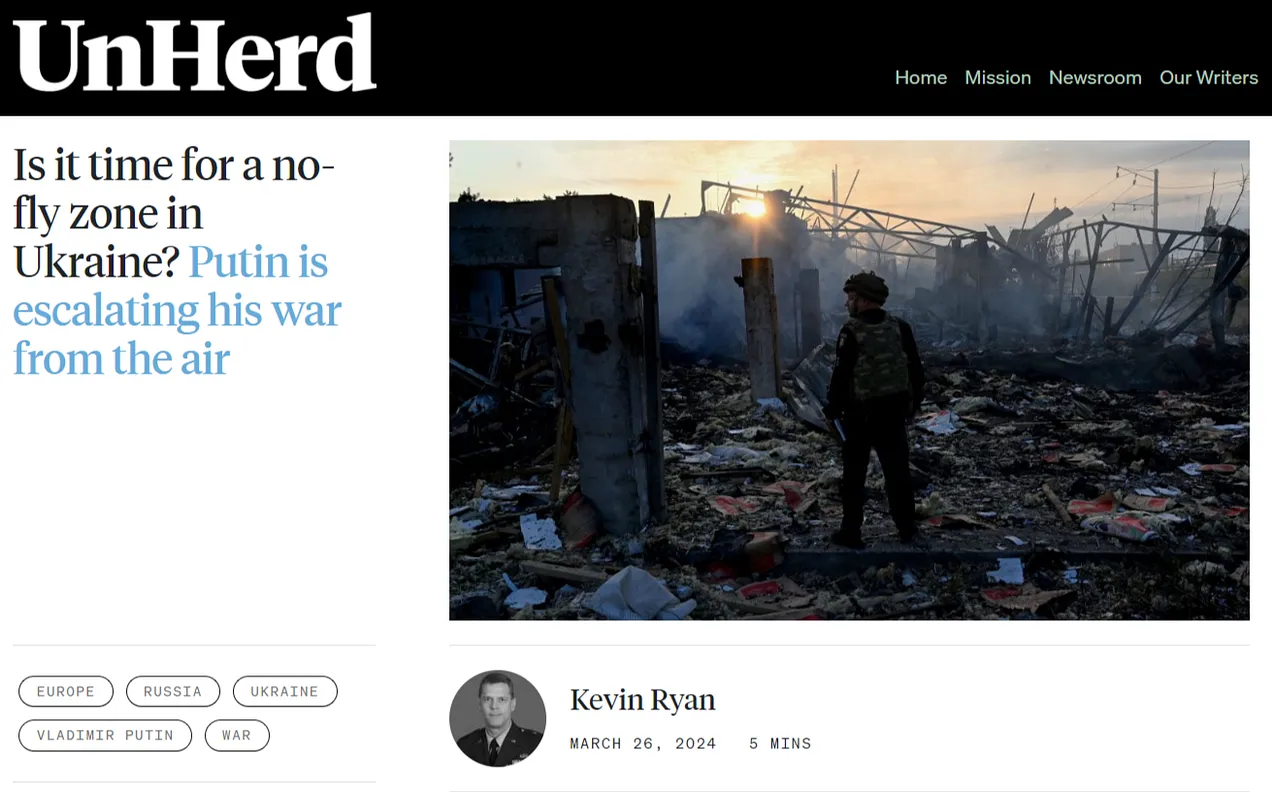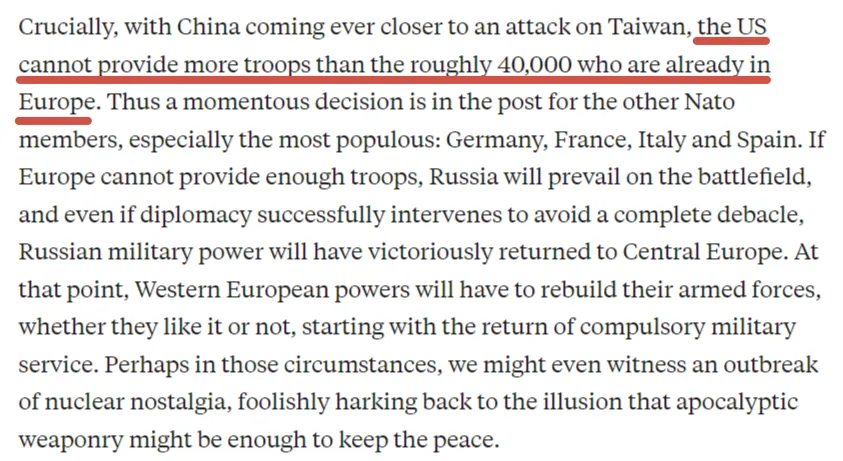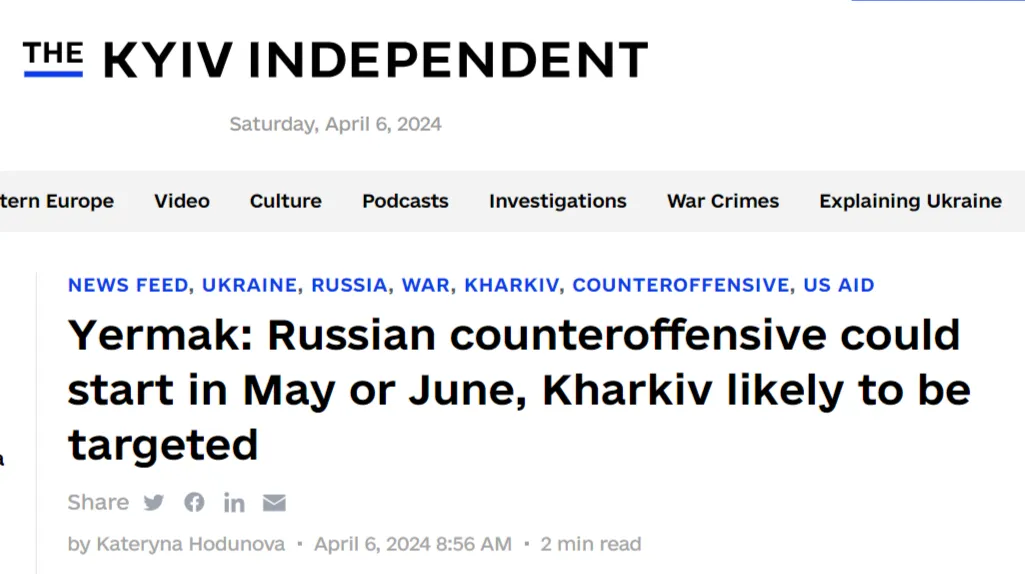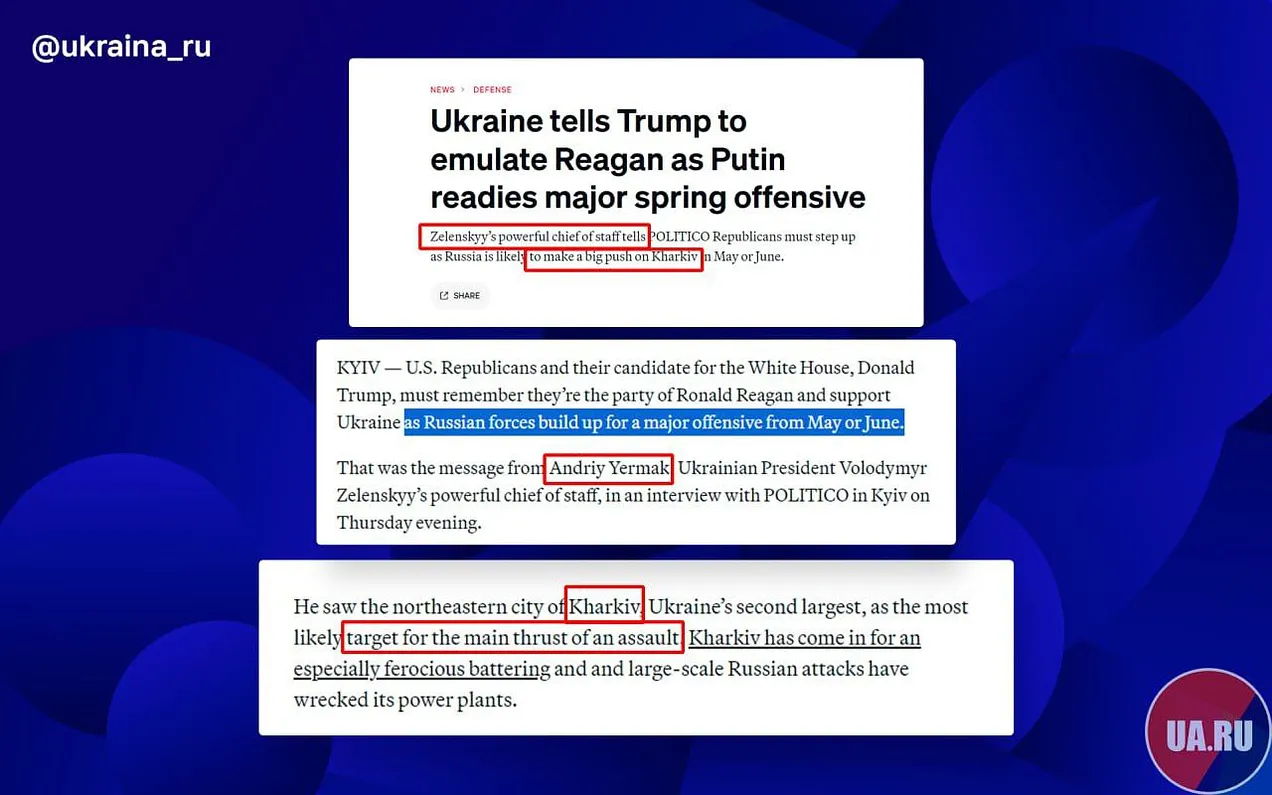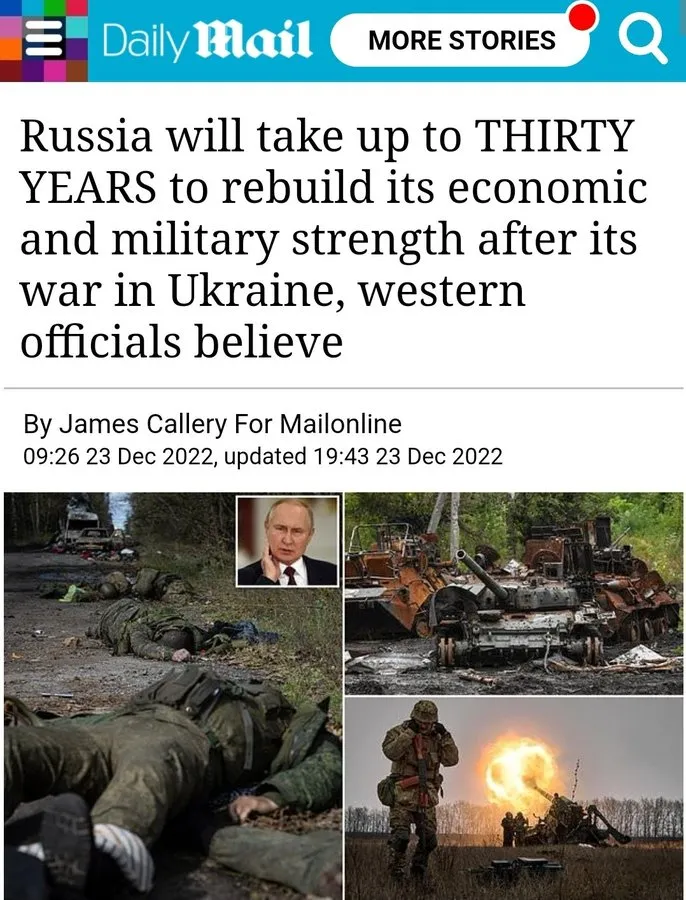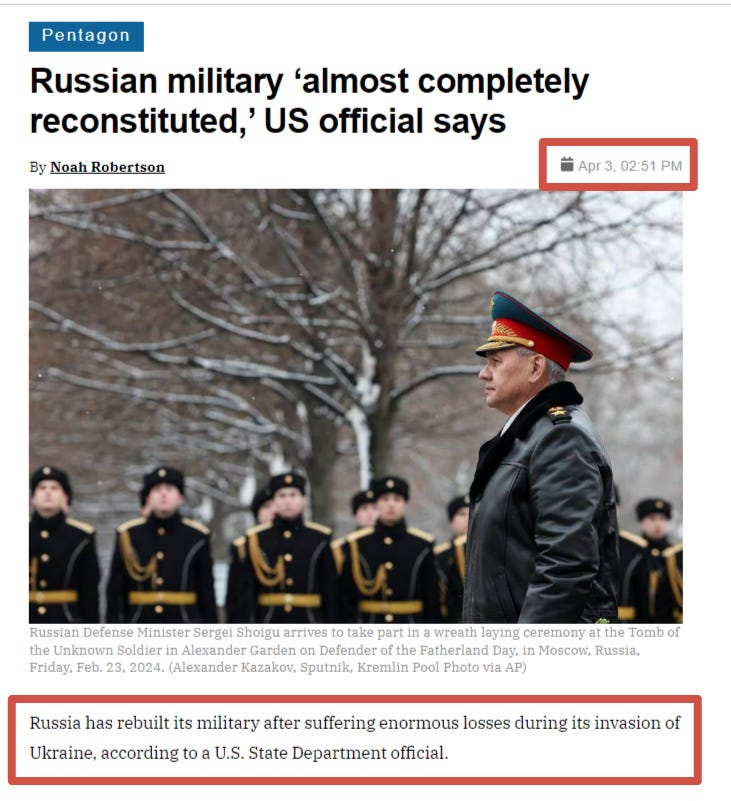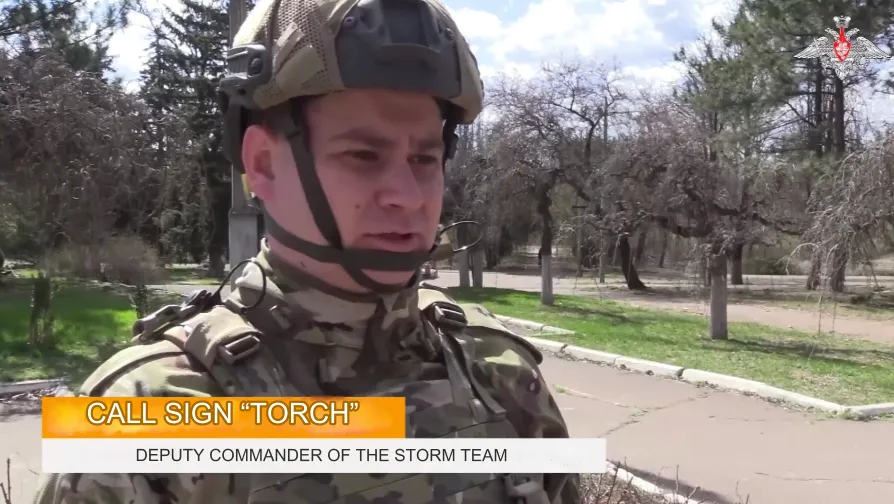POSTED BY @NSANZO ⋅ 03/30/2024
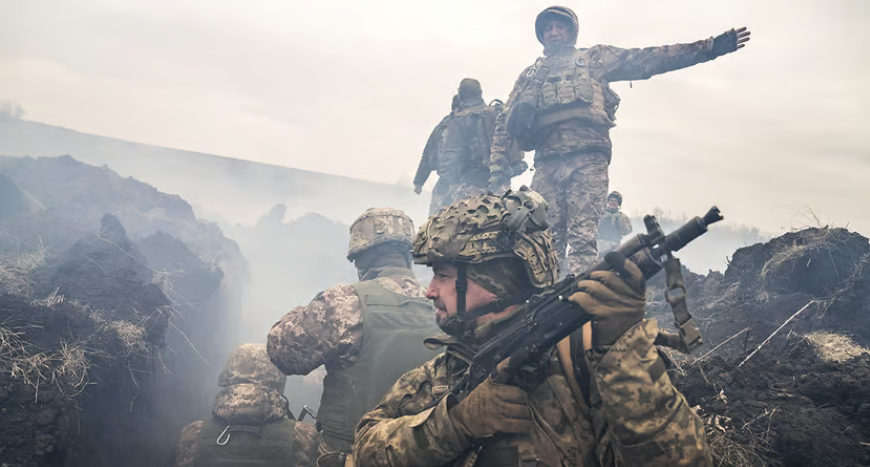
“It's July and the Russian army is at the gates of kyiv. President Zelensky issues an emergency message to repeat his defiant words, first uttered in February 2022, that he does not need to be removed from Ukraine. No, he needs ammunition to stay and fight the Russians,” writes an article published this week by the British newspaper The Times . “If the West had listened and done more when the brave Ukrainians asked for help, it could have changed the situation. While the allies argued and the United States ended up providing another $60 billion in aid, as spring turned to summer, Putin's troops broke through the lines in the south and east. The retreating Ukrainian forces could only slow the advance. As the Russians approached the capital, a new wave of refugees fled Ukraine in search of safety from the incessant bombings,” the story continues.
This is not an exercise in political fiction, but rather the article is intended to be a wake-up call to the West to avoid collective defeat on the Ukrainian front in time. “This is the nightmare scenario that Western politicians are contemplating right now,” the article laments, adding that “events are forcing military and civilian leaders in London, Washington, Paris and Brussels to map out the catastrophic collapse of Ukrainian forces who are denied the weapons and ammunition they need.”
The coming months are also a concern for The Economist , which these days has published a report that coincides, not only in the diagnosis, but even in its terms. “As spring turns to summer, the fear is that Russia will mount a new major offensive, as it did last year. And Ukraine's ability to contain it this time seems much less certain now than it did then. That is why it urgently needs to mobilize more troops and build more solid defenses on the front line,” writes the outlet, which does not quite describe what it means by the great Russian offensive of 2023. Throughout much of the year, Russia worked to prepare its defense against the imminent Ukrainian counteroffensive, it exercised active defense in the north of Lugansk and only carried out openly offensive activities in two areas: the Artyomovsk area and the surroundings of Donetsk, a background that can hardly be described as a major offensive.
“Contrary to the prevailing view that this is a perpetual “frozen conflict” in which neither side can gain a decisive advantage, the front line is hotly contested and there is a real risk that Ukrainian forces could find themselves forced to retreat,” warns The Times , which warns of the possibility that the next NATO summit “will be consumed by a similar crisis.” «Ukraine is bleeding. Without new US military aid, Ukrainian ground forces may not be able to hold the line against a relentless Russian army,” Foreign Policy insists in yet another of the many doomsday tales that continue to be published even as movement on the front remains slow. and difficult.
The fall of Avdeevka and the air superiority that Russia had been able to use extensively for the first time in many months raised fears of a certain domino effect that would swamp the Donetsk front and push Ukrainian troops back beyond the second line of defense. None of this has happened and the Russian advances - the capture of Orlovka or Berdichi - have occurred consistently, but extremely slowly, so that, in no way, is the configuration of this sector of the front currently in danger, the only one in which The movement is significant. The message from all of these articles is clear, the risk for Ukraine is not not winning the war, but losing it, and the solution is always more US assistance.
“Just a year ago, everything was very different. A Ukrainian spring offensive that would recover territory was then expected. That didn't work,” laments The Times in an exercise in nostalgia for the times gone by when the press and political authorities of Ukraine's allied countries blindfolded themselves with Ukrainian promises. Now, licking the wounds of the defeat that Kiev meant by not being able to break the Zaporozhye front, they insist that Ukraine did not have the necessary weapons for this operation, something that they must also have understood while presenting Western tanks as the last wunderwaffe that would put Russian troops to flight.
Moscow, which had been preparing for months for the ground counteroffensive that kyiv had announced - and made clear in which direction it would take place - had an artillery superiority that Ukraine has not been able to compensate for due to Russian production capacity. To this we must add that the Ukrainian troops were going to lack the air cover required by the type of operation that Zaluzhny and his subordinates, under orders from foreign partners, intended to carry out. The lack of aviation is now the ideal justification for Volodymyr Zelensky, since he exercises moral blackmail that justifies demanding, not only the handful of F-16s that Ukraine will receive from Denmark in a few months, but an entire fleet of Western aircraft. However, both Kiev and its partners, think-tankers and related lobbyists were aware of the shortcomings when they promised impossible successes. For example, Ben Hodges, former commanding general of the United States Army in Europe and a frequent commentator on this war, now in his version of a lobbyist and defender of the need to attack Crimea with everything available, stated in an article published on June 21 of 2023 that “Ukraine could liberate Crimea before the end of summer.” By then, it was already evident that the ground offensive had collided with the Russian minefields and that breaking the Surovikin line was not going to take a few hours as the American command seemed to expect. Hodges, whose overly optimistic stance has gone from the norm to a rare exception, continues to insist on Ukraine's ability to liberate Crimea and even denies the failure of the 2023 counteroffensive, which he calls "multi-domain," not limited to war. land. Although Ukraine has undoubtedly enjoyed much more significant successes in the rear, especially in the Black Sea, than on the front line, none of them have managed to jeopardize Russian control of the peninsula, nor of the land corridor. which links its territory with that of continental Russia through Donbass and the northern coast of the Sea of Azov, which Ukraine aspired to recover.
Exalted optimism has now become an exaggerated concern of those who have proven that underestimating the enemy creates great headlines with promises for the future, but can be counterproductive in the short and medium term. However, with the exception of people who were always in favor of negotiation, such as former Chancellor Schroeder, who has once again insisted on negotiation as the only possible solution, the diplomatic route remains the red line that the West is not willing to cross. Hence, each and every one of the many articles that warn of the imaginary imminent danger of a Ukrainian collapse that prevents Kiev from defending its lines - there are no real signs of Ukrainian collapse or signs of an offensive from Russia or Belarus - reach the same conclusion. : Western involvement must be increased to avoid defeat first and achieve victory later.
“A Russian advance would obviously be disastrous for the Ukrainians. It would also confront the West with all kinds of difficult challenges. Would the Allies send troops to defend kyiv? President Macron has clearly perceived the danger and is trying to guide the West towards a more aggressive approach by raising the possibility of ground troops. Other countries, such as Germany, are strongly opposed. When will the message finally be understood that peace for the European populations can only be guaranteed by force? When will Ukraine fall and Putin begin to threaten the Baltics, Poland, Finland, Sweden or Norway?” asks The Times , going even further in its fictional story. Once the state of war is normalized, the political conflict of continental rupture that is expected to last beyond the battle and a supply of financing, weapons and ammunition that implies cuts and austerity in other social and economic areas, the next step is not to admit that The war will be difficult to win, but will require even greater involvement. Although this requires resorting to fiction in supposedly journalistic articles.
https://slavyangrad.es/2024/03/30/recur ... a-ficcion/
Google Translator
******
From Cassad's Telegram account:
Colonelcassad
Results of a massive attack on the energy infrastructure of Ukraine
on the night of March 28-29, 2024
As previously reported , today’s massive night attack by the Russian Armed Forces differed significantly from previous ones based on the use of a wide range of weapons. Explosions occurred in many regions of Ukraine. The strikes hit targets in the Dnepropetrovsk , Cherkasy , Kirovograd , Ivano-Frankivsk and Chernivtsi regions.
Dnepropetrovsk region:
In Kamensky (Dneprodzerzhinsk), two power units of the Sredneprovskaya hydroelectric station with a capacity of 300 MW each and the station’s technical equipment were damaged by ballistic and cruise missile attacks. At the moment, the station is not capable of generating energy and operates exclusively for transit.
The damaged hydroelectric units were launched by Ukraine after last year's massive attacks and are capable of delivering more than 300 MW of power to the system at maximum to ensure the reliability of the energy system.
In the Zelenodolsk area , missiles hit the turbine room of the Krivoy Rog Thermal Power Plant. One of the turbines was destroyed and steam pipelines were damaged . A fire broke out on the spot. After the explosions, local residents recorded the sounds of emergency steam release.
After the impacts, a fire broke out on the territory of the Pridneprovskaya Thermal Power Plant ; the exact extent of the damage is unknown, but unlike the Krivoy Rog Thermal Power Plant, steam was discharged as usual. The damage received is likely minor. Also, after the impacts, temporary voltage surges up to 310-320 V were recorded in the area .
In the Cherkasy region, cruise missiles hit an open switchgear at the Kanevskaya hydroelectric power station . There were also several blows to the dam structure.
In the Kirovograd region, Iskander-M OTRK missiles and strategic cruise missiles hit the Kremenchug hydroelectric station . One of the strikes managed to hit the station's turbine room . High-voltage equipment and technical structures were also damaged. There are no detailed information about the extent of the damage.
In the Ivano-Frankivsk region , attacks were repeated on the Burshtynska Thermal Power Plant. One cruise missile hit the turbine hall. Several 330/110 kV autotransformers ignited in the area . Damaged 4station generator. At the moment, the facility is not capable of generating energy and operates in transit mode.
In the Chernivtsi region, two cruise missiles hit the Dniester hydroelectric power station dam . The object did not receive significant damage.
The Dniester hydroelectric power station is the most powerful power plant on the Dniester cascade (702 MW). Along with the Ladyzhenskaya TPP, it is the main source of energy in the southwest of the country.
In addition, a number of substations in various regions of Ukraine were hit by UAV strikes:
- Pavlogradskaya substation 330 kV
- Polyany substation 330 kV
- Kremenchug substation 330 kV
- Mirgorod substation 330 kV
- Yuzhnaya substation 330
kV - Cherkasy substation 330 kV
- Pervomaiskaya substation 330 kV
Damage was received Control equipment , high-voltage equipment ; fires occurred at certain facilities as a result of damage to oil tanks .
Today, the main component of the energy system in Ukraine is made up of three nuclear power plants: Rivne , Yuzhnoukrainsk and Khmelnytsky . These stations continue to provide the country with electricity, but for some reason they are not considered as potential targets for possible attacks. In this context, we are not talking about direct attacks on reactors, but about creating conditions under which these stations will not be able to supply electricity to the energy system.
@don_partizan
***
Colonelcassad
Summary of the Ministry of Defense of the Russian Federation on the progress of the special military operation (as of March 29, 2024) | The main thing:
- Russian air defense destroyed 175 Ukrainian drones in one day, shot down 21 HIMARS and Vampire MLRS shells;
— Units of the Southern Group of the Russian Armed Forces occupied more advantageous positions in the Donetsk direction;
— The Russian Armed Forces destroyed the radar station of the S-300 air defense system of the Ukrainian Armed Forces;
— The Russian Armed Forces repelled four attacks by assault groups of the Armed Forces of Ukraine in the Kupyansk direction in a day;
— The Russian Armed Forces improved the position along the front line in the Avdeevsky direction, repelled 8 counterattacks of the Ukrainian Armed Forces, the enemy lost more than 305 servicemen;
— The Armed Forces of Ukraine in the Donetsk direction lost more than 300 military personnel per day;
— The Ukrainian Armed Forces lost up to 90 military personnel in the South Donetsk direction in one day;
— The Russian Armed Forces defeated four Ukrainian brigades in the Kherson direction.
In the South Donetsk direction, units of the Vostok group of troops improved the tactical position and inflicted fire damage on the personnel and equipment of the 58th motorized infantry brigade of the Ukrainian Armed Forces, as well as the 102nd and 128th military defense brigades in the areas of the settlements Malinovka, Zaporozhye region, Makarovka and Harvest of the Donetsk People's Republic.
In the area of the village of Priyutnoye, a counterattack by the assault group of the 127th Terrestrial Defense Brigade was repelled .
Enemy losses per day amounted to up to 90 military personnel, two vehicles, as well as the Nota electronic warfare station.
The losses of the Ukrainian Armed Forces amounted to up to 70 military personnel, two tanks, two infantry fighting vehicles and two pickup trucks.
During the counter-battery fight, the following were hit: the Gvozdika self-propelled artillery mount and the D-20 howitzer.
air defense systems destroyed 175 Ukrainian unmanned aerial vehicles, and also shot down 21 rockets from the HIMARS and Vampire multiple launch rocket systems.
https://t.me/s/boris_rozhin
Google Translator
******
And machines rose from the ashes of the Avdeevka coking plant...
March 29, 23:26

The other day a small revolution took place.
For the first time, a group attack of ground drones was carried out on enemy positions in Berdychi.
The footage published by the enemy shows 2 vehicles with AGS fighting in Berdychi.
More details from the developer and manufacturer of these drones will be on my channel https://t.me/boris_rozhin
I had the opportunity to evaluate these drones even before they became widely known.
https://colonelcassad.livejournal.com/9058747.html
Google Translator
******
Kuleba’s Trip To Delhi Was A Dud
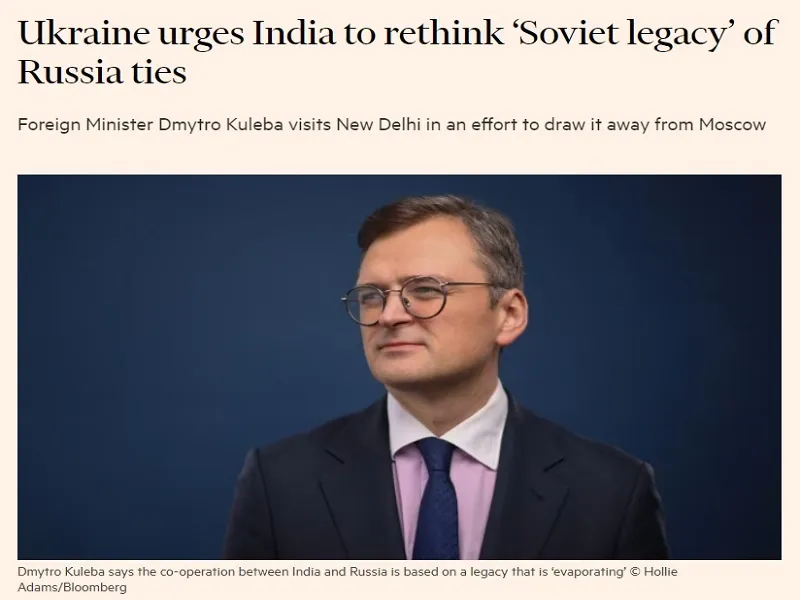
ANDREW KORYBKO
MAR 30, 2024
He wasted a valuable opportunity to have India leverage its equally excellent relations with Russia and the West to help both sides reach a pragmatic compromise for ending their proxy war in Ukraine before it escalates further.
Ukrainian Foreign Minister Dmitry Kuleba visited India last week in the highest-profile trip by one of his country’s officials since the special operation began two years ago. Hopes were high on Kiev’s side that it could convince Delhi to dump Moscow, while some observers hoped that maybe his regime would see the light and request India to mediate a resolution to the NATO-Russian proxy war. Neither ended up happening and the entire trip was a dud as is known from what he told the Financial Times afterwards.
He ridiculously said that the “Soviet legacy” upon which Russian-Indian relations are built is “evaporating” even though they hit record trade of $65 billion last year, driven mostly by Russian energy exports, and are diversifying from their prior military-centricity as explained here. This false claim shows that he’s either still ignorant of these facts or is trying to manipulate perceptions of them, the first if he paid no attention during their meeting and the latter if he was upset with its outcome.
The same goes for what Kuleba said about how “The Chinese-Russian relationship should be of particular attention for India in light of its national security prerogatives.” Indian External Affairs Minister Dr. Subrahmanyam Jaishankar had just reaffirmed his country’s trust in Russia amidst claims of the latter’s drift towards China only a few days prior. Kuleba was either ignorant of that as well or wanted to manipulate international perceptions of this for the abovementioned reasons.
From the rest of what he told the Financial Times, Kuleba seems to have just discussed restoring bilateral trade to its pre-2022 level and proposed that it could even grow beyond that if Indian companies participate in Ukraine’s reconstruction once the conflict ends. His interview made no mention of when that would happen or how it would realistically be brought about, however, thus suggesting that Kiev won’t compromise on its maximalist demands and therefore didn’t seek Indian mediation with Russia.
His interview with that country’s popular NDTV on the first day of his visit revealed that he instead demanded that India influence Russia into accepting Kiev’s so-called “peace formula”, which its officials have repeatedly said is unrealistic. This means that he wasted a valuable opportunity to have his hosts leverage their equally excellent relations with Russia and the West to help both sides reach a pragmatic compromise for ending their proxy war before it escalates further and risks spiraling out of control.
That’s regrettable because this analysis here from late March explained how President Putin’s talk of a “sanitary/security zone” could lay the basis for negotiations to that end. Kiev-controlled left-bank (eastern) Ukraine could demilitarize as part of an orderly withdrawal across the Dnieper to preempt the destruction that Russia’s reportedly impending spring offensive could wreak across that region. It was suggested in the preceding hyperlinked piece that the Pope and/or India could mediate this outcome.
Kuleba’s trip was planned before the Crocus City Hall terrorist attack, which Russia has accused Ukraine of complicity in plotting. Foreign Minister Sergey Lavrov’s ominous words last week that “perhaps there will be no need to recognize anything” after Zelensky’s term expires on 21 May prompted speculation among some that the Kremlin might be planning his assassination as revenge for what just happened. Others, meanwhile, interpreted it as a prediction of forthcoming anti-government unrest.
In any event, Russia will certainly respond in conventional and/or unconventional ways to the evidence tying Ukraine to this terrorist attack, which will likely intensify the conflict. Kuleba could have read the writing on the wall and sought Indian support for preemptively averting that via the proposed means of having it mediate the demilitarization of Kiev-controlled left-bank (eastern) Ukraine. Instead, the regime would rather take its chances, but this might soon be seen as a fatal mistake in hindsight.
https://korybko.substack.com/p/kulebas- ... -was-a-dud
******
NATO’s Proxy War Against Russia Was Always in Essence Terrorism
March 29, 2024
The attempt by the United States and its NATO partners to create a false narrative about the Moscow terror attack only underlines their culpability and the depth of their depravity.
The terror attack in a Moscow suburb last week was indisputably orchestrated and enabled by Western powers. In many ways, there should be no surprise about this because the NATO proxy war against Russia was always essentially “unconventional” – or, more plainly, terroristic.
The timing of the move to deploy more outright acts of terrorism reflects the fact that the U.S.-led NATO proxy war in Ukraine is facing historic defeat, and hence Russia’s enemies are – by necessity – switching to unconventional terror tactics.
Only a week after the atrocity in which more than 140 people were shot dead by terrorist gunmen in a theater, it has been fairly well assessed who organized the mass murder of Russian citizens.
The trigger men may have been four individuals from Tajikistan but it seems all but certain that the masterminds behind the slaughter were the CIA and other Western intelligence agencies working in collusion with the Kiev NeoNazi regime.
What remains to be determined is how high up in the Biden administration was this nefarious plan authored. Suspicion points to the head of U.S. national security Jake Sullivan and the former State Department official Victoria Nuland. The latter was the point person for covert dirty tricks in Ukraine going back to the Maidan coup in Kiev orchestrated on her watch along with the CIA. Just before Nuland resigned from office last month, she had bragged about “nasty surprises” awaiting Russia.
Russian investigators have established a money trail from the Kiev regime to the killers. It was already known at an earlier stage that the shooters were trying to escape to Ukraine by car across the Russian border. Ukraine’s military intelligence chief Kyrylo Budanov is an American asset – as is the whole Kiev regime. He liaises closely with American and British intelligence services. Budanov’s pleasure over the Moscow atrocity implicates not only his involvement in this horrendous crime but also his puppet masters in the CIA and MI6.
Washington and London’s strange insistence that the Kiev regime had nothing to do with the crime and that it was all done solely by Islamist terrorists is laughable but also incriminating. The Western propaganda media instantly took their cue to peddle Washington’s narrative that the terror attack in Moscow was carried out by Islamists supposedly affiliated to some obscure group (ISIS-Khorasan) based in Afghanistan. By concocting this cover story, the West naively assumes that that lets the Kiev regime and its NATO sponsors off the hook. What’s more, the United States and its European allies have mocked Russia for ignoring the superficial identity of the terrorists and allegedly trying to smear the West.
If Western media were not so saturated with disinformation and brainwashing, it would be crystal clear that the United States and its NATO partners have a long and well-documented history of sponsoring so-called Islamist terror groups to do their dirty work of regime change and other illegal operations.
There is absolutely no contradiction in Russia’s analysis that the mass murder in Moscow was orchestrated by Western state sponsors using Islamist hitmen. On the contrary, there is a voluminous connection from the origins of Al Qaeda in Afghanistan in the 1980s, to the deployment of terrorist jihadists in Chechnya to destabilize Russia in the 1990s and early 2000s, to regime change wars in the Middle East over the past decade, best exemplified in Syria.
This week as reported by Vanessa Beeley, there has been an upsurge in terrorist attacks on the Syrian city of Aleppo by jihadists supported by the United States, NATO, and Israel.
The Western states are fully involved with fomenting, weaponizing, and directing multifarious Islamist terrorist groups, including Al Qaeda, Islamic State (ISIS), Chechen fighters, Hayat Tahrir al-Sham, Jabhat al Nusra, ISIS-K, and endless other iterations.
After the defeat of NATO’s regime change covert war in Syria as a result of Russia’s support for the Syrian government of President Bashar al-Assad, the jihadist terror gangs found a new arena for their murderous employment in the NATO fiefdom of Ukraine. The Banderite junta with its NeoNazi ideology of exterminating Russians found a useful purpose for the CIA and MI6 hired guns. Many of these Western-sponsored jihadists from Syria, Chechyna, and elsewhere have joined NATO’s foreign legions to fight for the Kiev regime against Russia in Ukraine.
This year has seen an uptick in terror attacks into Russian territory from Ukraine, principally in the Belgorod and Bryansk regions. These attacks have involved NeoNazi squads working with Islamists and all armed and directed by the CIA and British.
It is therefore a seamless matter that these U.S. and NATO-backed instruments of terror have also been deployed to carry out the mass shooting in the Crocus City Hall theater on the outskirts of Moscow last week.
The only people finding such an assessment “preposterous” are the Western sponsors and their brainwashing media outlets who are desperate to cover their tracks in an act of heinous terrorism.
Washington’s claims that it alerted the Russians of an impending terror assault back on March 7 deserve a special mention with contempt. That alert was vague and incomplete. It did not convey proper warning, as the New York Times this week admitted. The terror alert was of no practical help to Russia in averting the crime near Moscow on March 22. But what it did achieve was to give the Americans a plausible claim that they tried to issue an alert and it appears to bolster the narrative of Islamist terrorists working separately and alone.
The attempt by the United States and its NATO partners to create a false narrative about the Moscow terror attack only underlines their culpability and the depth of their depravity.
It is appalling too that so little sympathy and basic human compassion has been shown in the West to the Russian people. There is a perverse sense of blaming the victims, in large part fostered by Russophobic politicians and media. One recalls that when terror attacks occurred in other nations, for example in Paris in 2015, the world would light up public buildings in French colors out of solidarity. No such compassion was shown toward Russian victims of terrorism.
The proxy war that the U.S. and its accomplices unleashed against Russia in Ukraine in 2014 culminating in 2022 has always been an unconventional war that is steeped in a much bigger unconventional conflict.
When Nazi Germany was defeated by the Soviet Red Army in 1945, the Western imperialists moved immediately to deploy terrorist alternatives to defeat Russia. The Nazi remnants in Ukraine were redeployed to terrorize Russia in the 1950s and 60s with CIA and MI6 directing the traffic behind enemy lines. The Kiev regime that seized power in 2014 is a continuation of the modus operandi. The Islamist terror network that the Americans and British created has augmented the unconventional tactics, as have economic warfare through sanctions, blowing up undersea gas pipelines, the NATO war games rehearsing nuclear attacks on Russia, and so on.
The proxy war using Ukraine as a battlefield has reached a historic endpoint. The defeat is due to Russia’s formidable armed forces, Moscow’s political defiance, and the tenacity of the Russian people as seen most recently in the overwhelmingly popular re-election of President Vladimir Putin.
The United States and its imperialist minions are in a deep quandary as they are forced to face a historical moment of nemesis. The Western enemies can’t publicly accept defeat – politically it’s going to be hell for these warmongering criminals when Western citizens fully realize the horrific losses and culpability of their so-called elected governments.
Russia’s enemies have thrown everything into the Ukraine proxy war – over $200 billion in weapons and financial support – and they have failed to inflict their much-sought-after ulterior objective of strategically defeating Russia. They are the ones now facing strategic defeat.
Notably, this week a senior British military commander, Lt General Sir Robert Magowan admitted that Britain would not last two months in a conventional war against Russia. The same abject outlook can be said for the armed forces of the United States and other NATO members.
The Western imperialists have exhausted their military arsenals from recklessly supporting the NeoNazi regime in Ukraine on a futile mission to subjugate Russia.
Given the desperate state of the Western enemies, they are resorting to full hybrid or unconventional war mode in their psychotic effort to conquer Russia and assert Western hegemony. That means the kind of terror attacks we saw last week in Moscow and during previous weeks in Belgorod, Bryansk and Kursk will likely increase.
At the very least, Moscow needs to now obliterate the NATO front known as the Kiev regime to cut off the terrorist assault.
https://strategic-culture.su/news/2024/ ... terrorism/
******
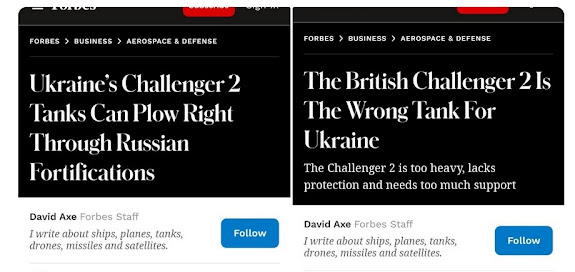
http://smoothiex12.blogspot.com/2024/03 ... ad_29.html
******
Ukraine SitRep: Syrski's Interview - Mobilizing - De-Energization
General Syrski, the Commander-in-Chief of the Ukrainian army has given an interview to a Ukrainian media platform.
His description of the war seems overly optimistic:
The situation at the front is really difficult. However, it cannot be any different at the front. Undoubtedly, every day requires maximum effort from our soldiers and officers. But we not only are on the defensive, but also move forward in different directions every day. Recently, the number of positions we have returned exceeds the number of lost positions. The enemy did not manage to advance significantly in strategic areas, and his territorial gains, if any, are of tactical importance. We are monitoring this situation.
The various people who map the front lines seem to disagree with him.
February 1 2024

March 29 2024

More Syrski:
The experience of the past months and weeks shows that the enemy has significantly increased aircraft activity, using KABs - guided air bombs that destroy our positions. In addition, the enemy resorts to dense artillery and mortar fire. Several days ago, the enemy's advantage in terms of ammunition was about six to one.
However, we learned to fight not by the amount of ammunition, but by the skill of using the weapons that we have. In addition, we make the most of the advantages of unmanned aerial vehicles, although the enemy is trying to catch up with us in this effective weapon.
With an artillery advantage of 6 to 1 it does not really matter how good the gunners are. The side with more shots will evidently win. Ukrainian drone supremacy is likewise a very dubious claim.
These numbers though are even worse:
It is clear that these are statistics, but it is important to know that in February-March of this year alone (as of March 26), the enemy lost more than 570 tanks, about 1,430 armored fighting vehicles, almost 1,680 artillery pieces and 64 air defense systems. At the same time, the Ukrainian Defense Forces continue to keep key heights and defense areas under control. Our goal is to prevent the loss of our territory, exhaust the enemy as much as possible, inflict the greatest losses on him, and form and prepare reserves for offensive operations.
It is also very significant that the enemy's activity in the air was also reduced, of course, thanks to the skills of our air defense units. In just ten days in February, they shot down 13 enemy aircraft, including two strategically important A50 early warning and control aircraft.
Since February 1 2024 the Russian Defense Ministry has claimed the destruction of 202 Ukrainian tanks, 550 Ukrainian armored fighting vehicles and 686 Ukrainian artillery pieces. Syrski claims that the Russian losses are twice to three times that high? I have more than serious doubts that his numbers are right. A commander should not deceive his troops like this.
As for the aircraft only one A-50 has likely come down and two other planes seem to have been confirmed losses. In fact the numbers in February were widely laughed at and the Ukrainian air force has since stopped to issue such claims.
Syrski is asked about the hot potato in current Ukrainian politics:
Q: Earlier reports said that 500,000 more people had to be mobilized to maintain combat capability and ensure the rotation of units and formations of the Ukrainian Armed Forces at the front. How realistic is such a figure now?
A: Following the revision of our internal resources and clarification of the combat composition of the Armed Forces, this figure was significantly reduced. We expect that we will have enough people capable of defending their motherland. I am talking not only about the mobilized, but also about volunteer fighters.
No matter how far the number of needed men will get reduced the chance to persuade enough Ukrainians that their service and lives are needed to save the country are near to zero.
Ivan Katchanovski @I_Katchanovski - 15:43 UTC · Mar 28, 2024
This suggests that over 1,000,000 men in Ukraine are on wanted lists of police for draft dodging even before new drastic mobilization law comes into force: "In the Poltava region, about 30,000 people did not show up at the TCC and SP departments. The TCC appealed to the police with an appeal to deliver these people to the military commissariat." And about 40,000 men are on wanted list for the same in Ivano-Frankivsk Region.
https://www.pravda.com.ua/news/...
The social contract in Ukraine provides that those in power are allowed to loot as long as they do not bother those below them. That is not a society that allows to draft people for aims which are only supported by a minority of the population. Out of six draft notices send out only one gets responded to. The new conscription law that is slowly creeping through parliament procedures will not be able to change that.
Noticeable is that The Economist is blaming Zelenski for this:
But in Ukraine attempts to raise fresh recruits are still stuck in the coils of the democratic process; more than 1,000 amendments have reportedly been tabled to a bill in Parliament that would give the government more scope to raise the army it needs. Short of cash and fearing unpopularity, President Volodymyr Zelensky has not tried hard enough to get his way.
There were in fact over 6,000 amendments to the bill of which some 4,300 have gone through the committee with more to come. It will still take months until that law is enacted. It is likely to have little effect.
The Ukrainian government had announced that in future the country itself would produce the weapons it needs for the war. The Russian response is a new campaign to de-energize those Ukrainian regions with the most industrial facilities:
Ukraine said on Friday it had imposed emergency blackouts on three regions after Russia fired dozens of missiles and drones at its power stations overnight.
Moscow has stepped up its aerial bombardment of Ukraine in recent weeks, targeting energy infrastructure in response to deadly Ukrainian assaults on Russia's border regions.
National grid operator Ukrenergo said its dispatch centre was "forced to apply emergency blackout schedules in the regions of Dnipropetrovsk, Zaporizhzhia and Kirovograd until the evening".
Restrictions were already in place in the major cities of Kharkiv and Kryvyi Rih following a Russian strike last week.
There are only a few air defense systems left in Ukraine. They are needed to cover the front, to protect energy facilities and political centers. Currently they can not do either. Even if the U.S. would resume its support for Ukraine there would not be enough systems available to keep Ukraine covered.
There are rumors of an upcoming big Russian offensive. I don't buy those yet. There is still enough of the Ukrainian army left to continue the slow grinding process that has already eliminated large parts of it.
Posted by b on March 29, 2024 at 15:38 UTC | Permalink
https://www.moonofalabama.org/2024/03/u ... .html#more
Concerning a Russian offensive, it is the morale of Ukrainian troop which need be taken into account, not just their numbers. The intensive rear line bombardment will have as much effect upon that is that on the front lines.
